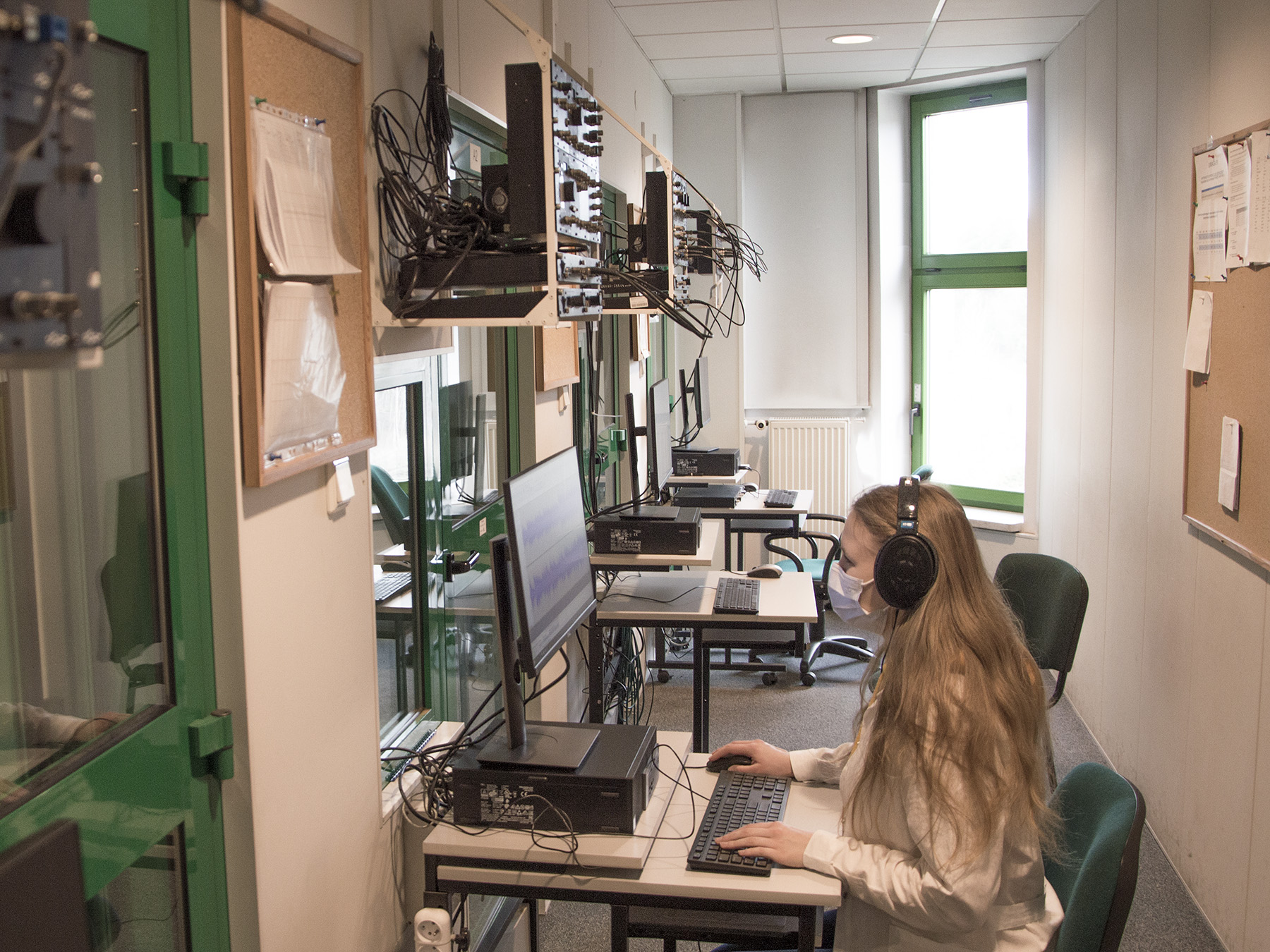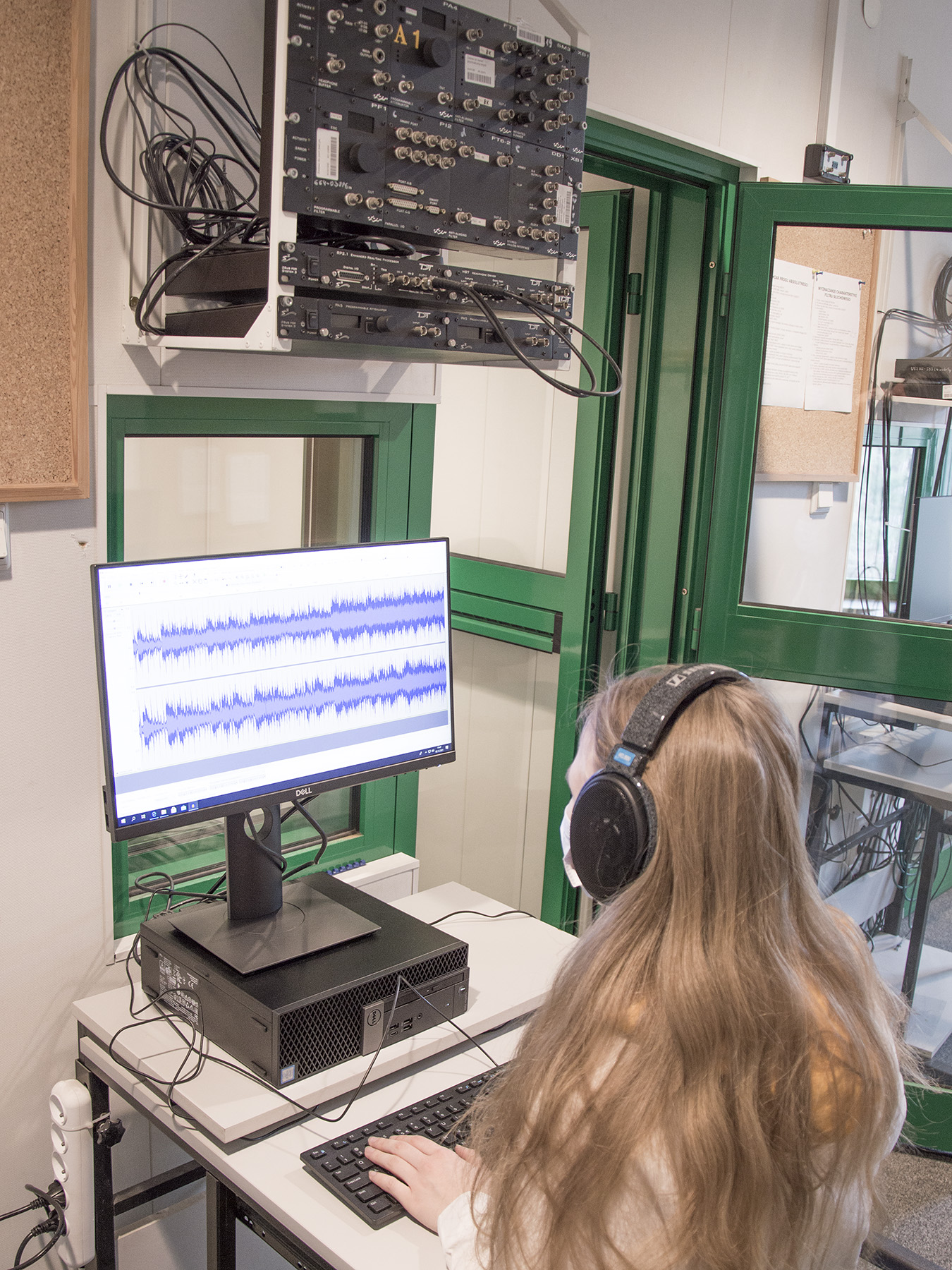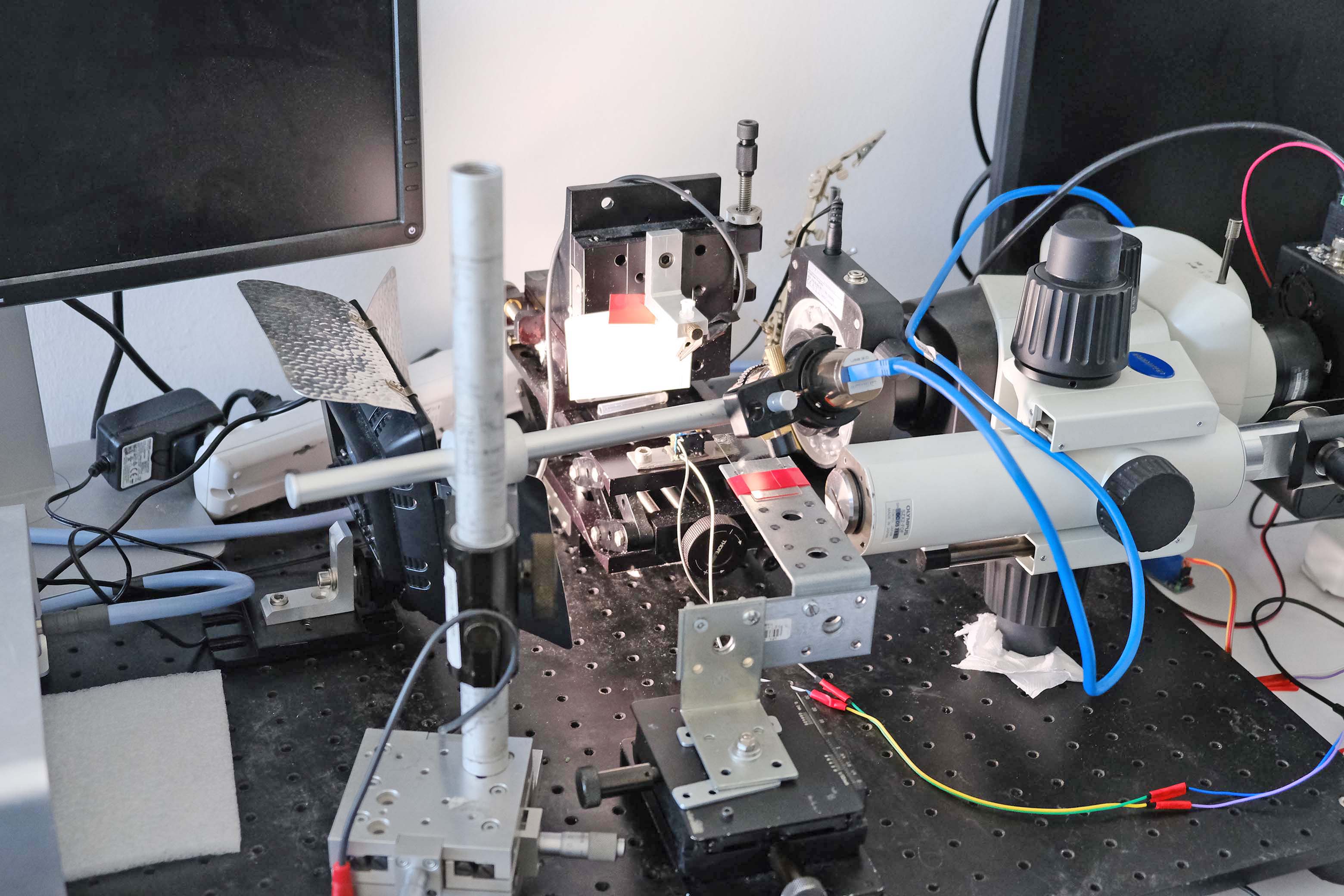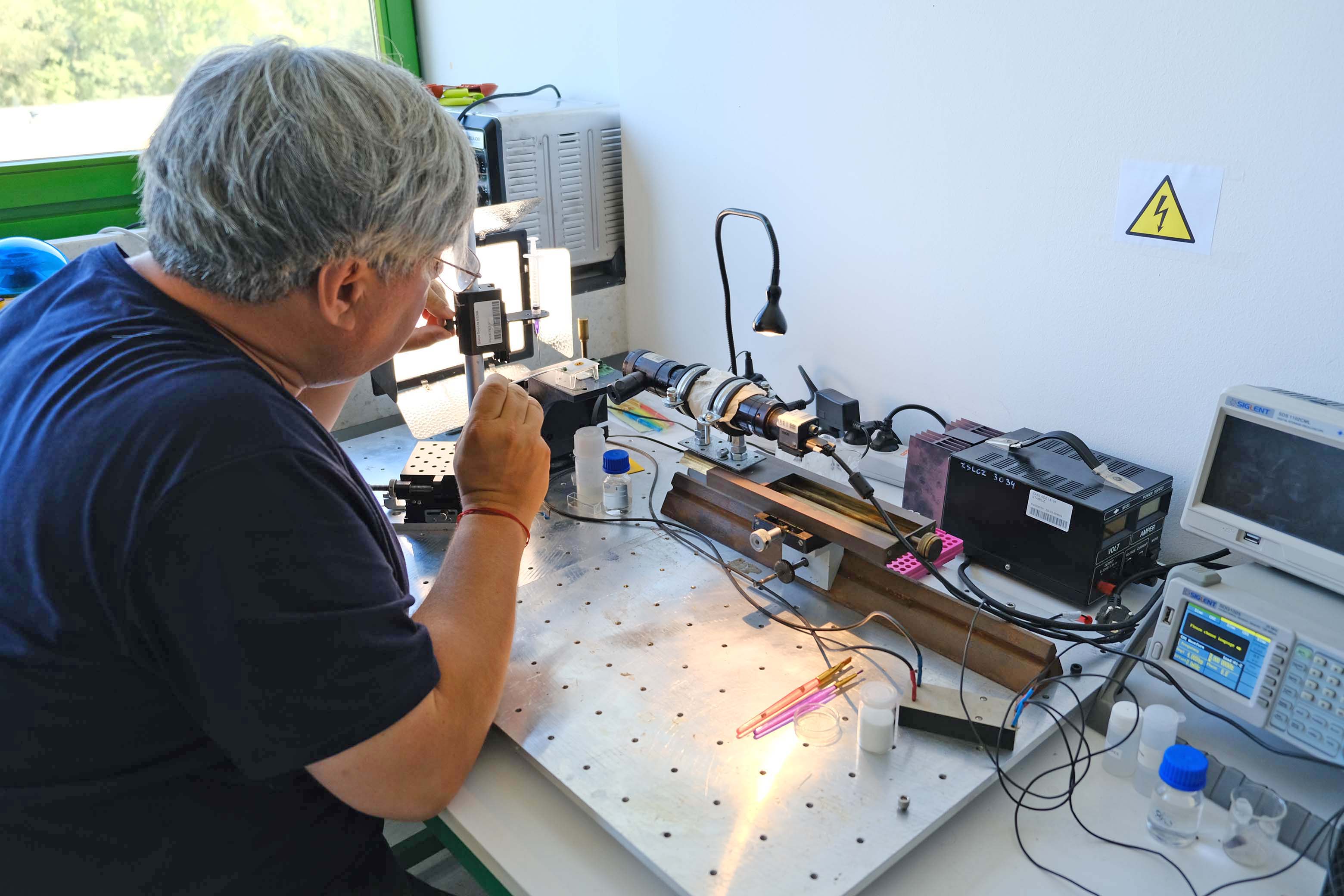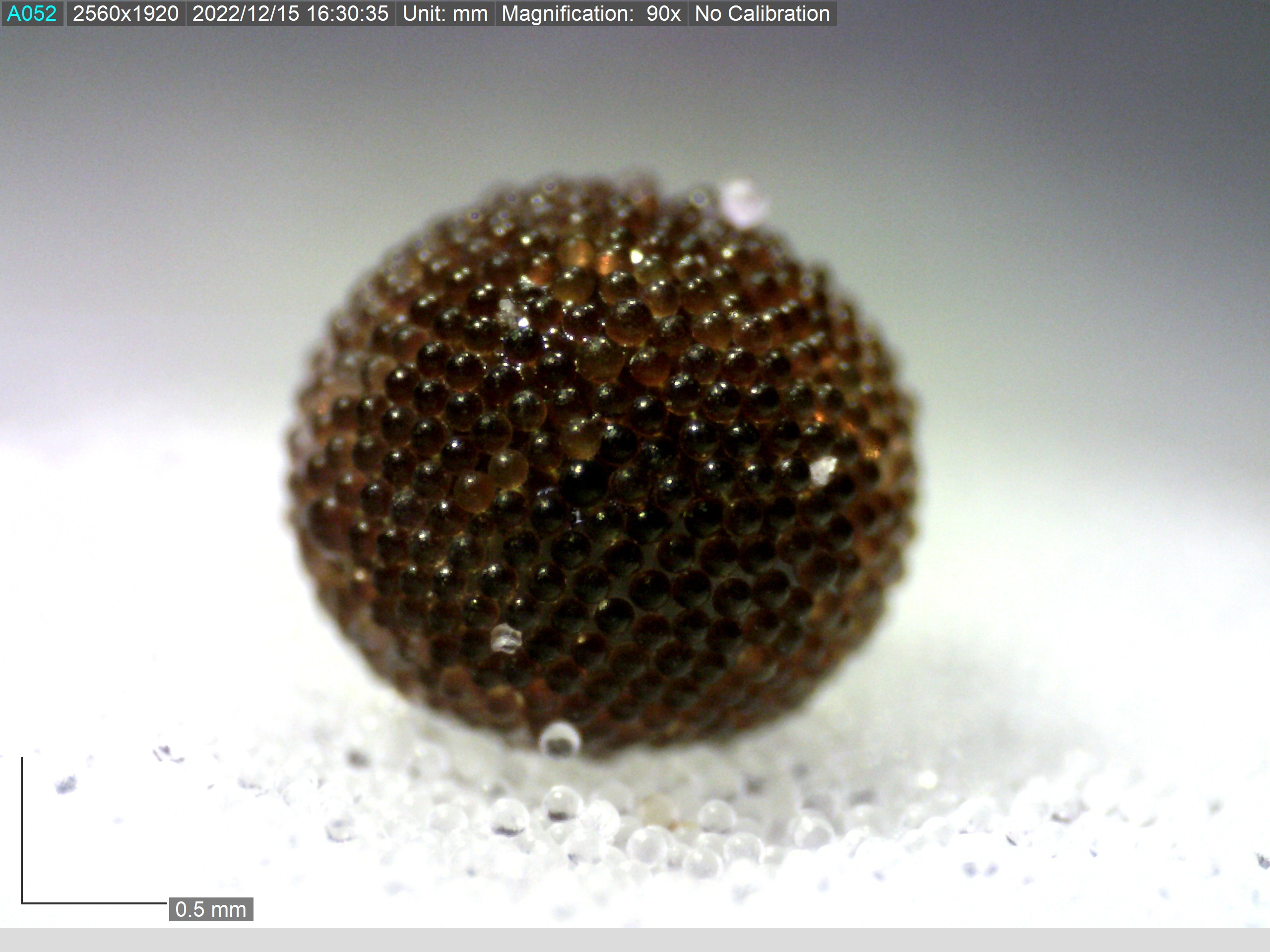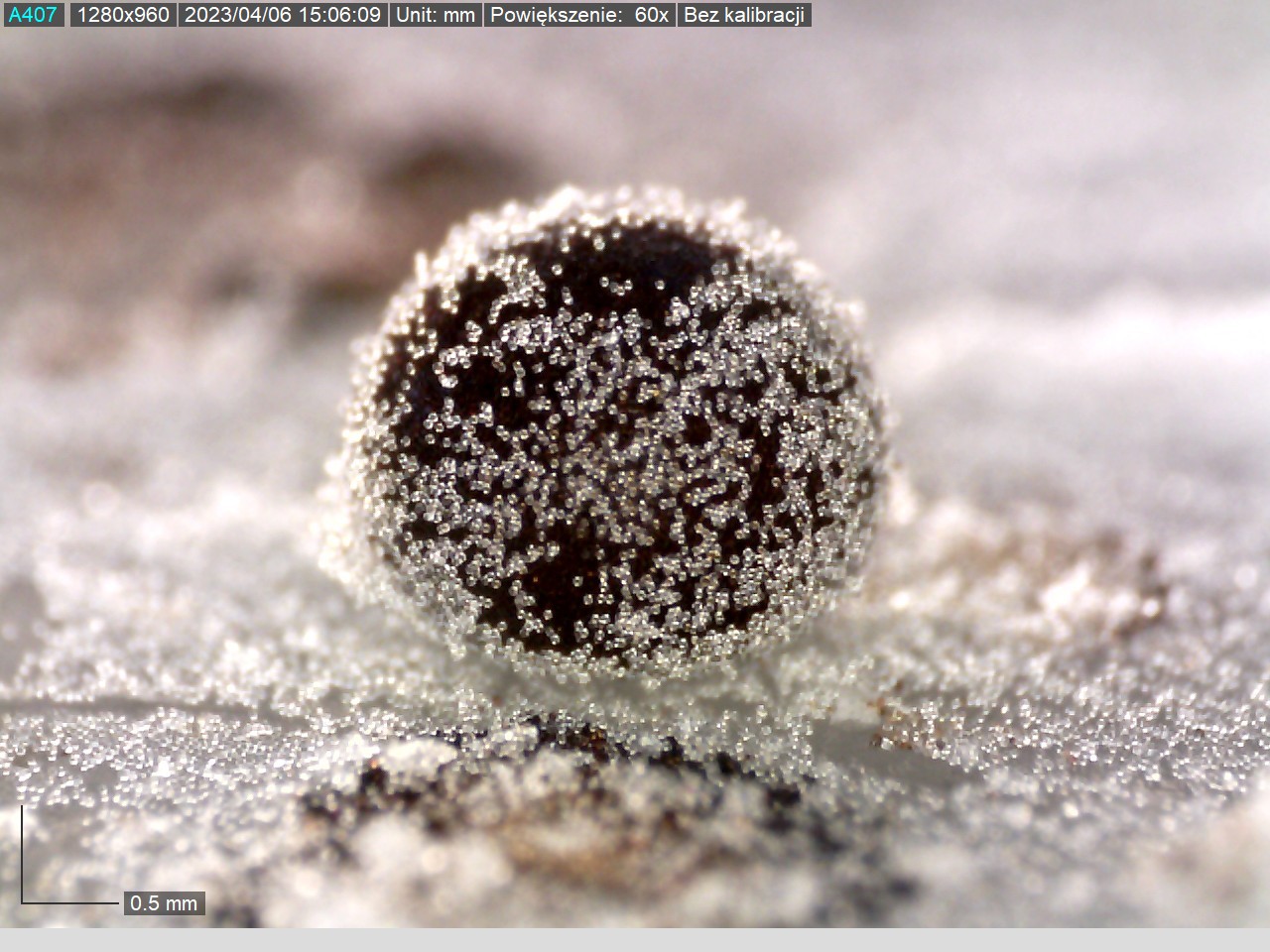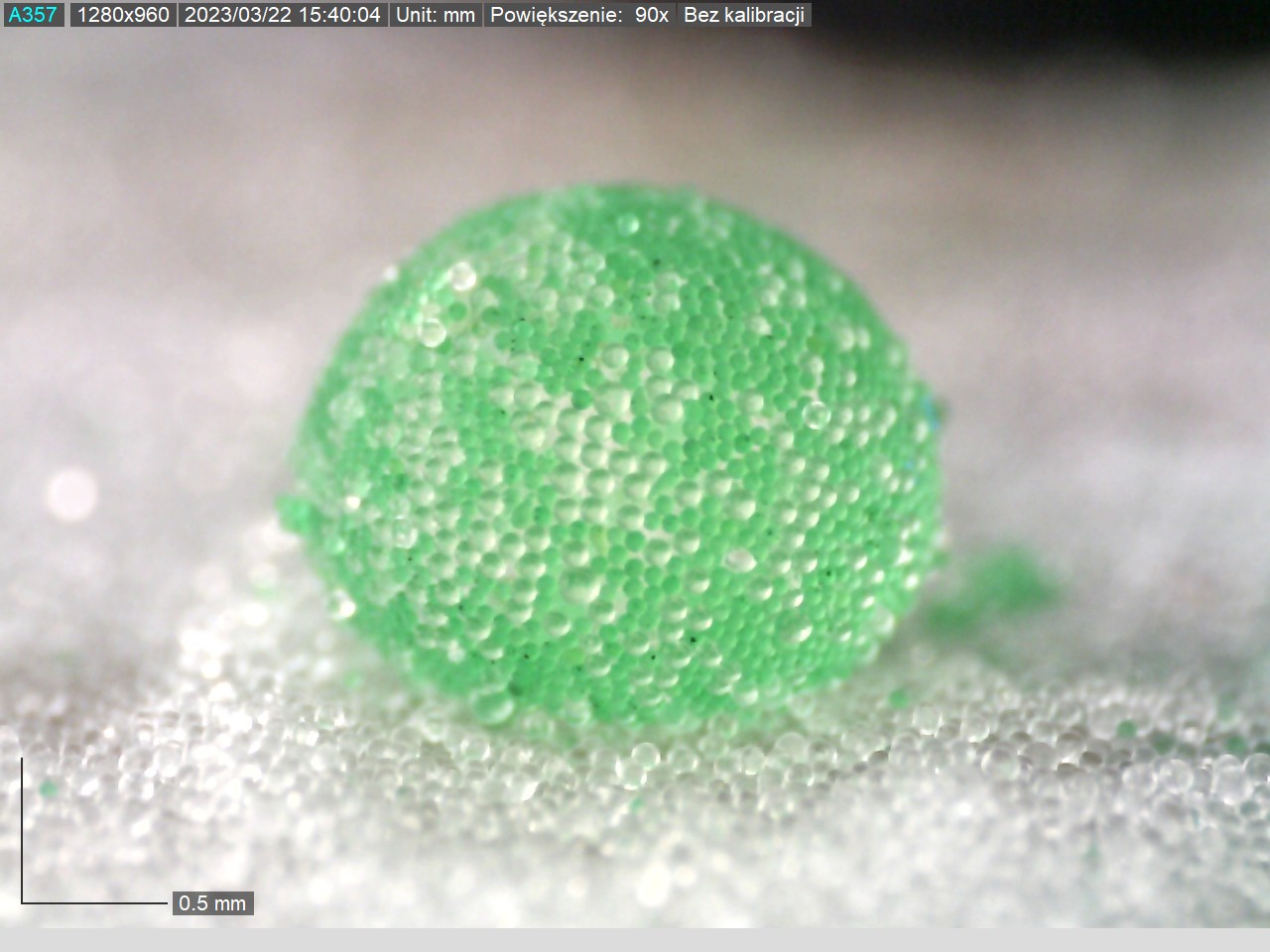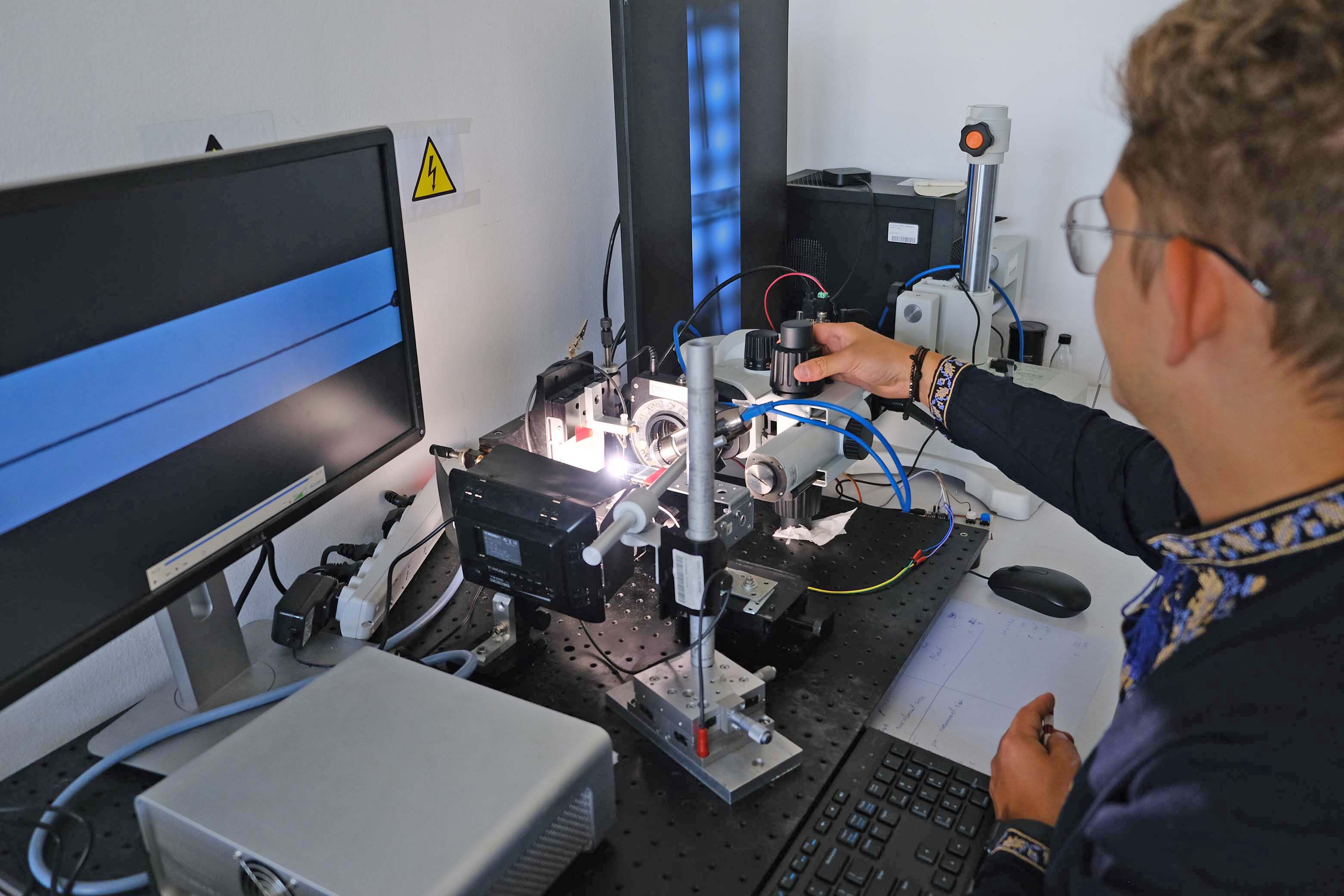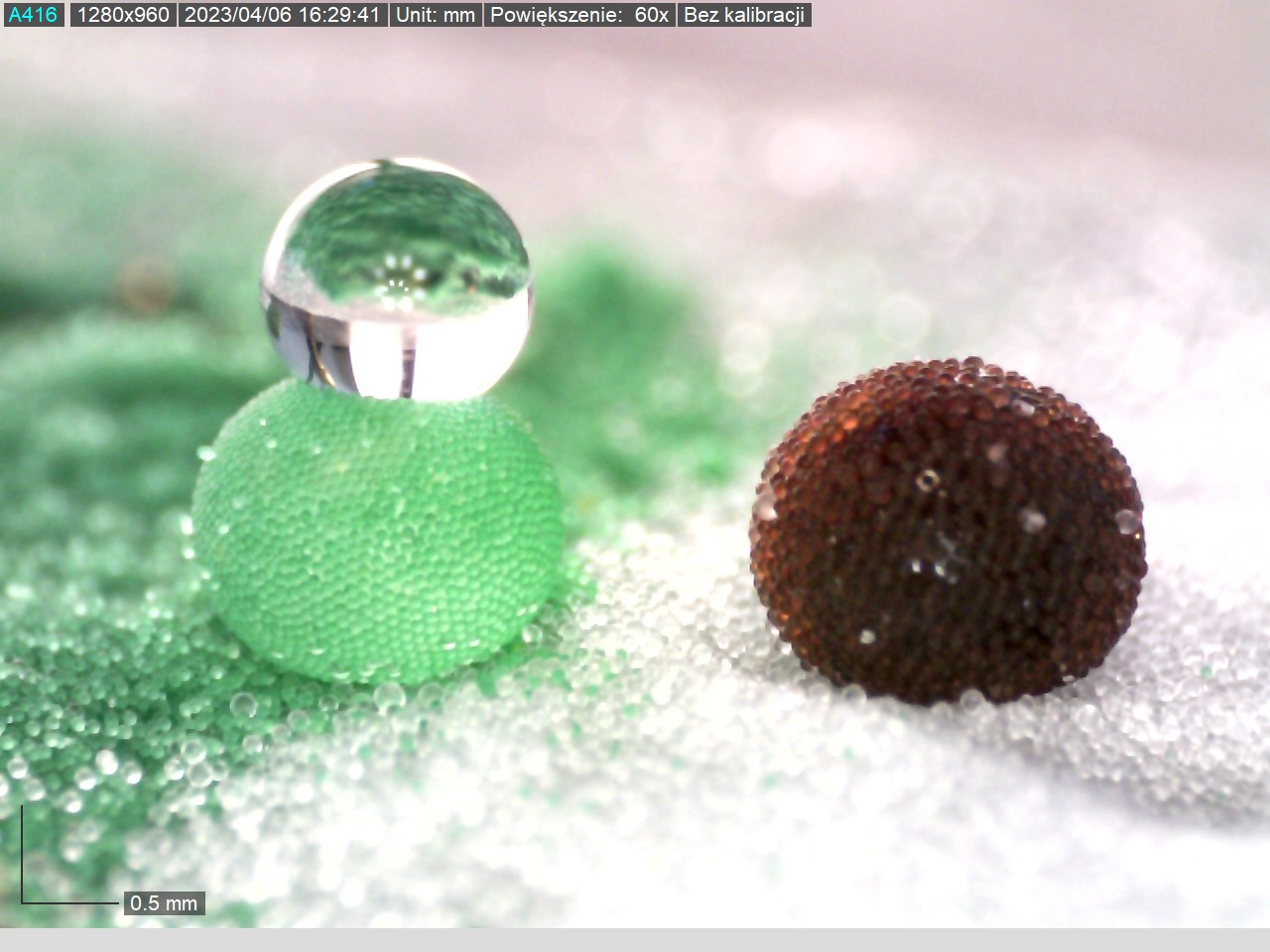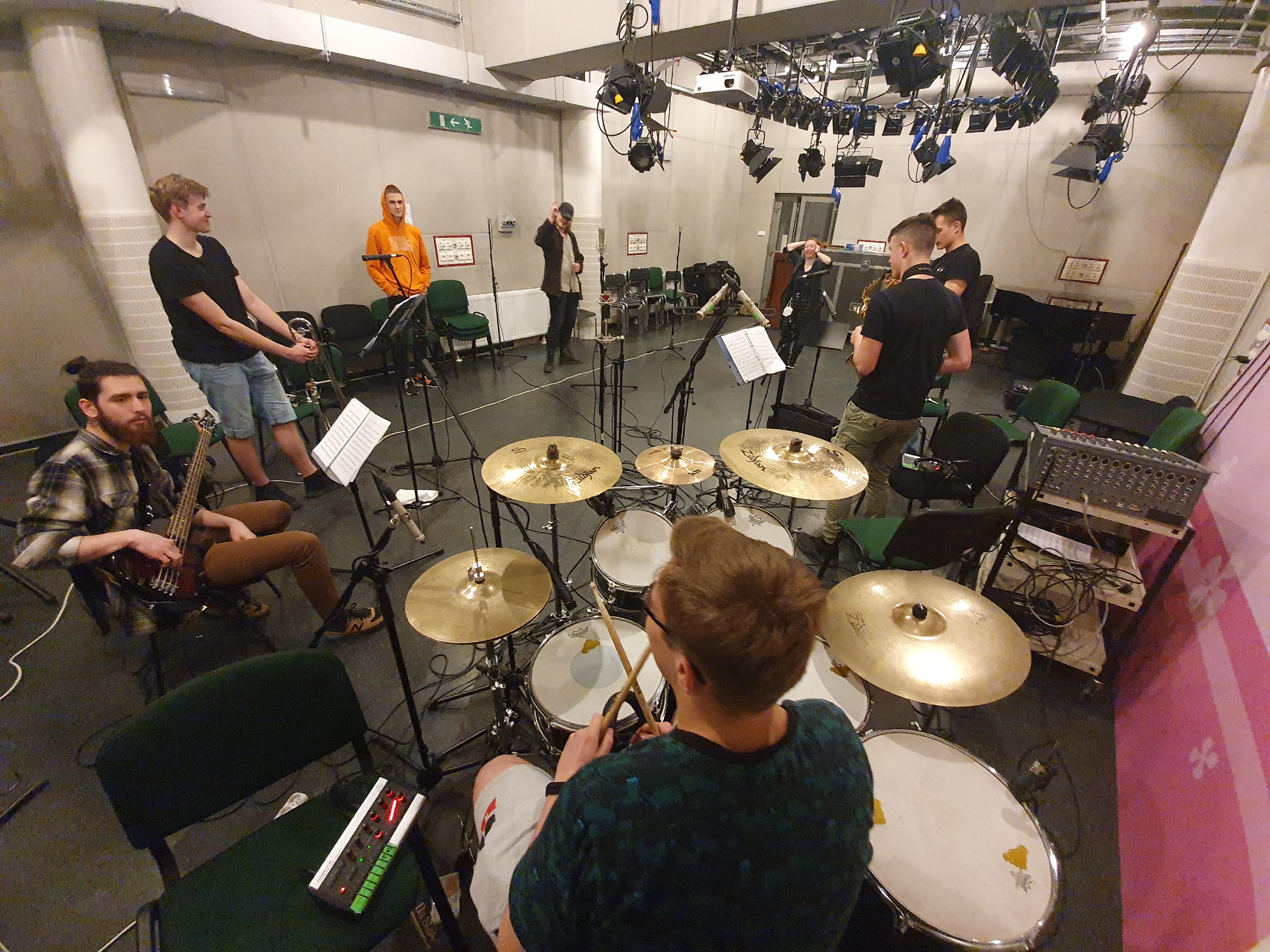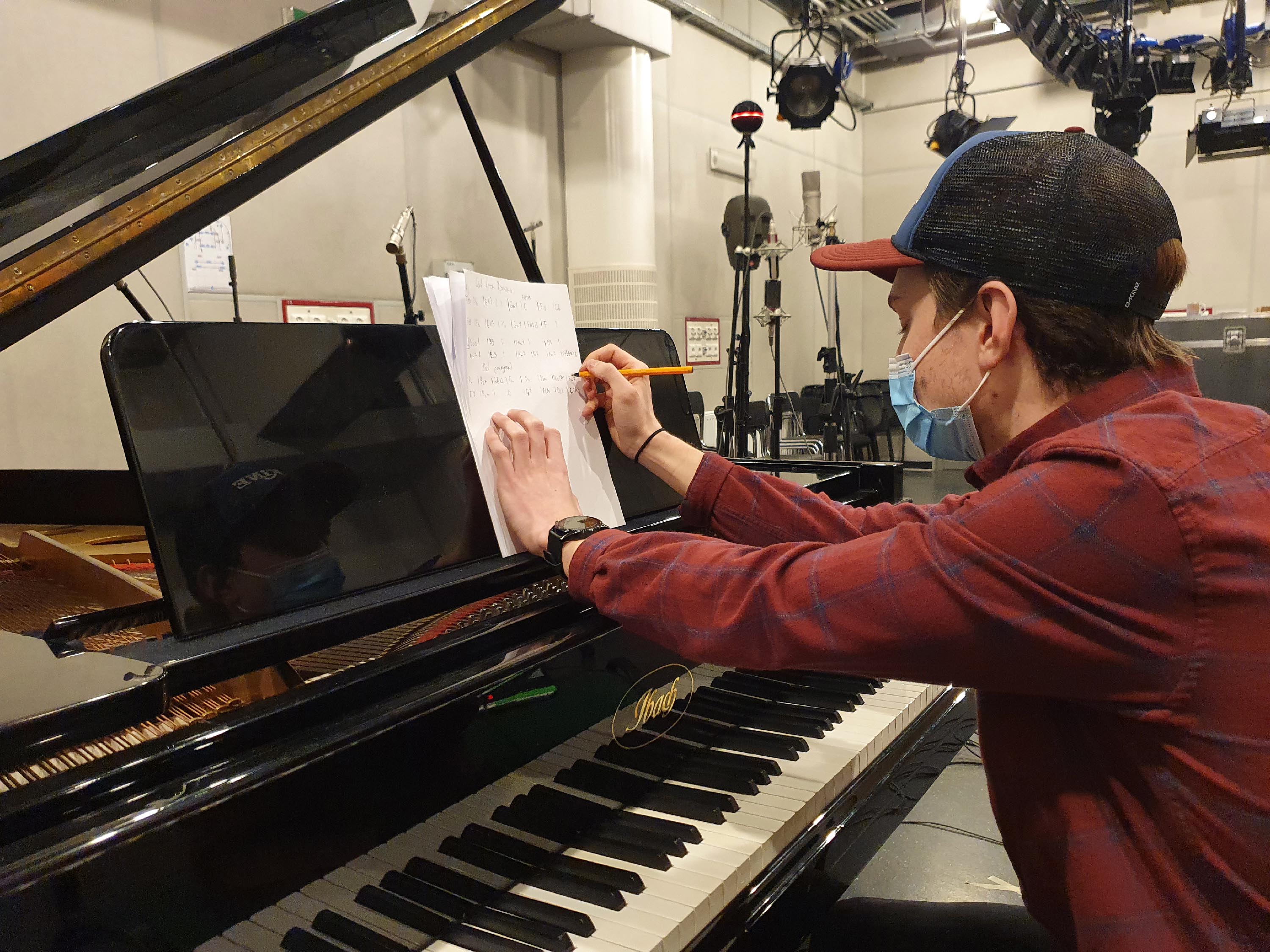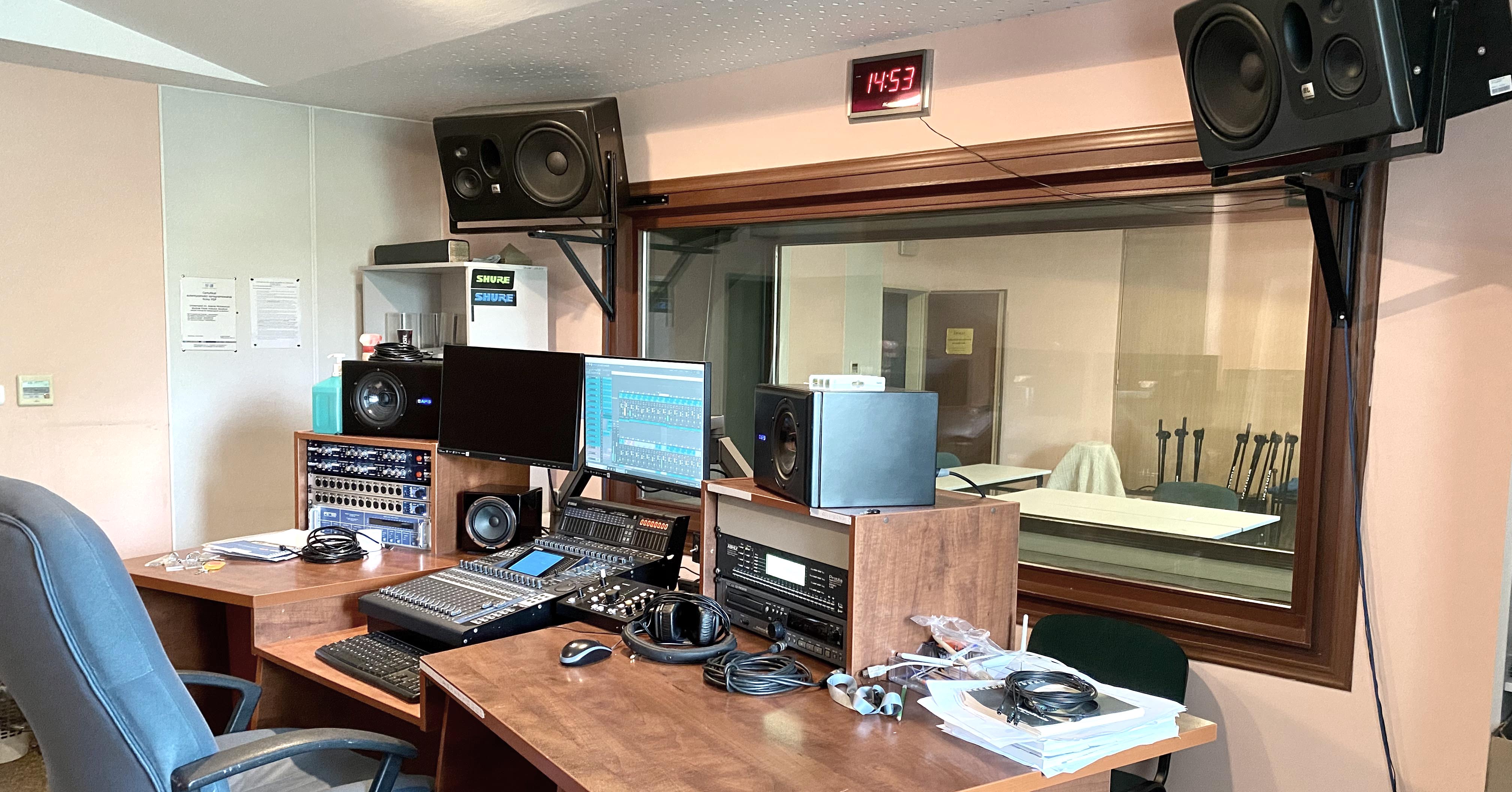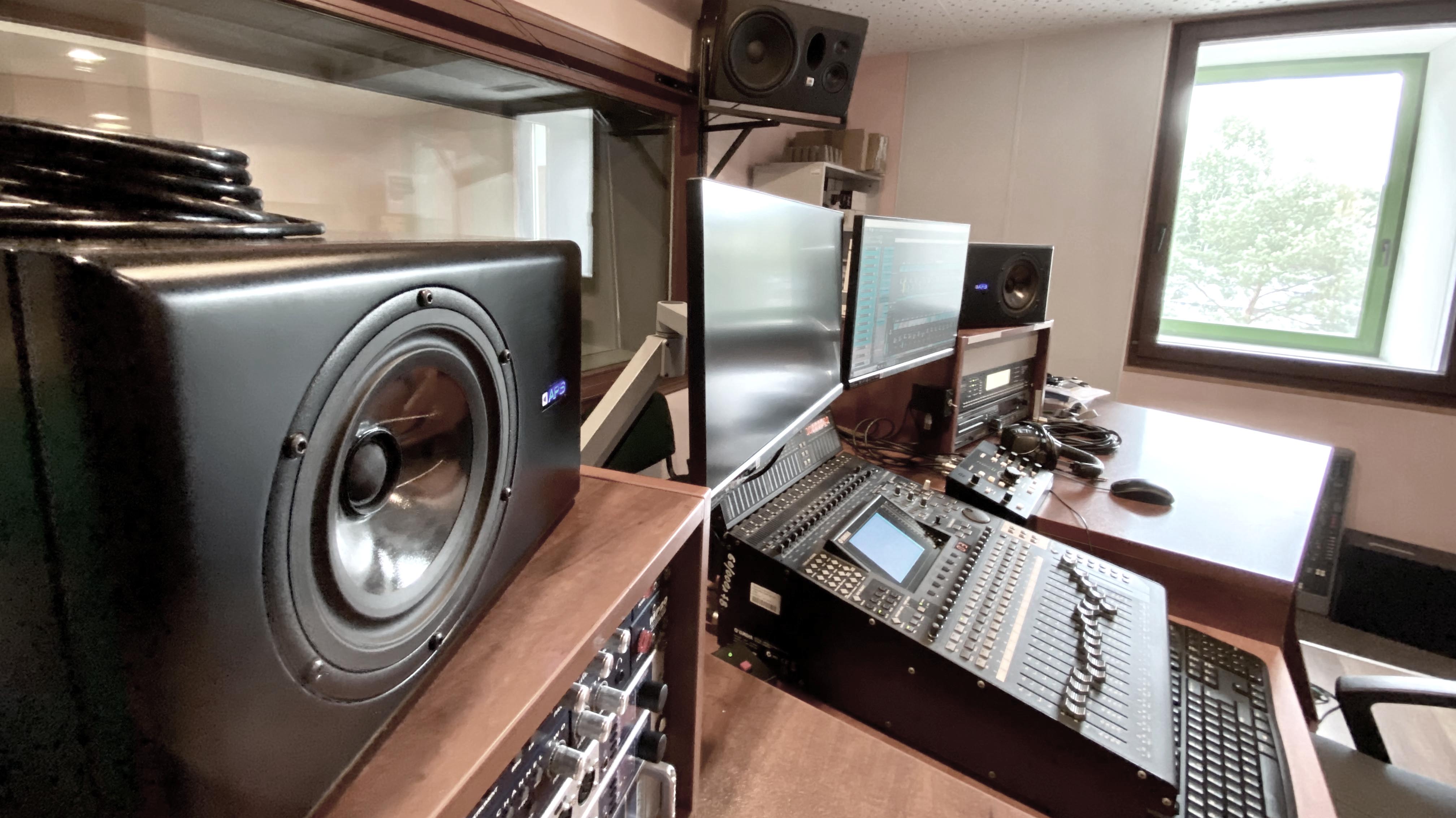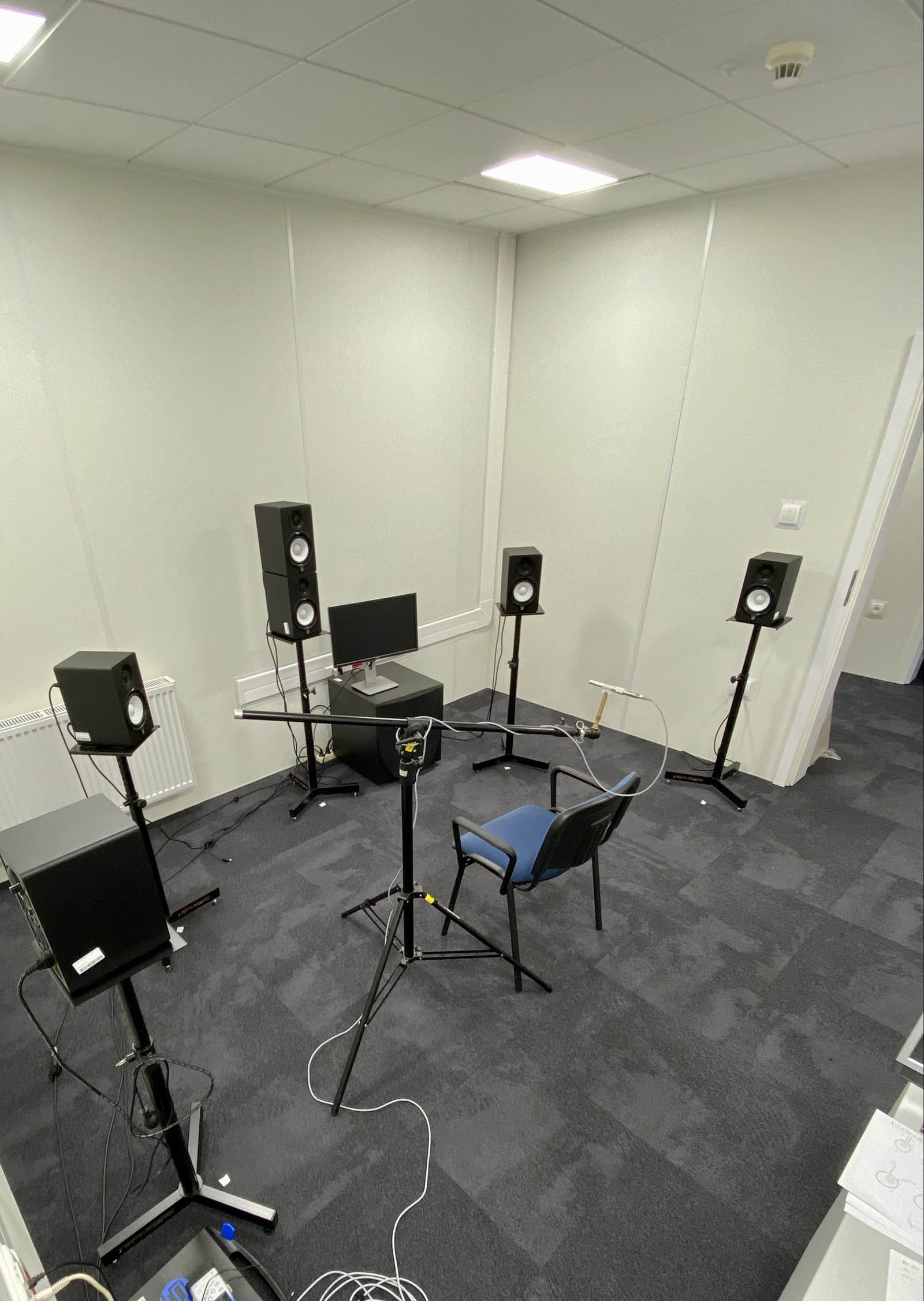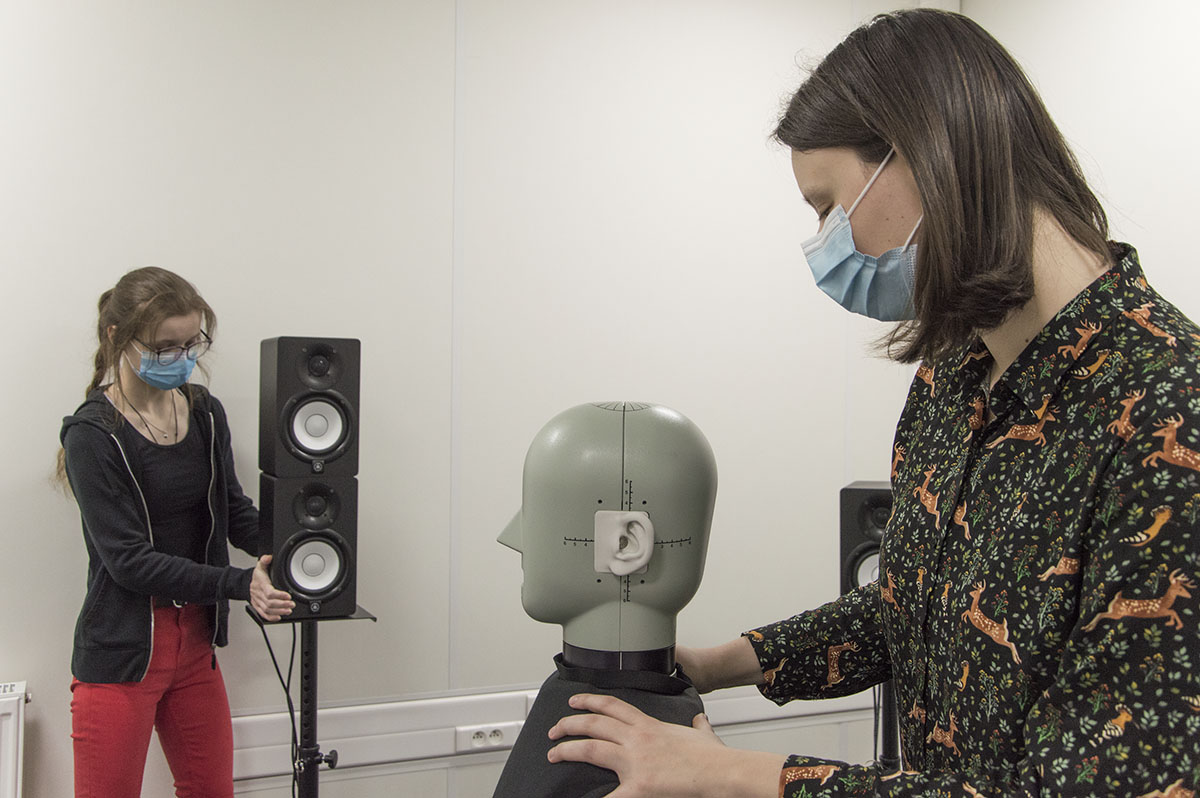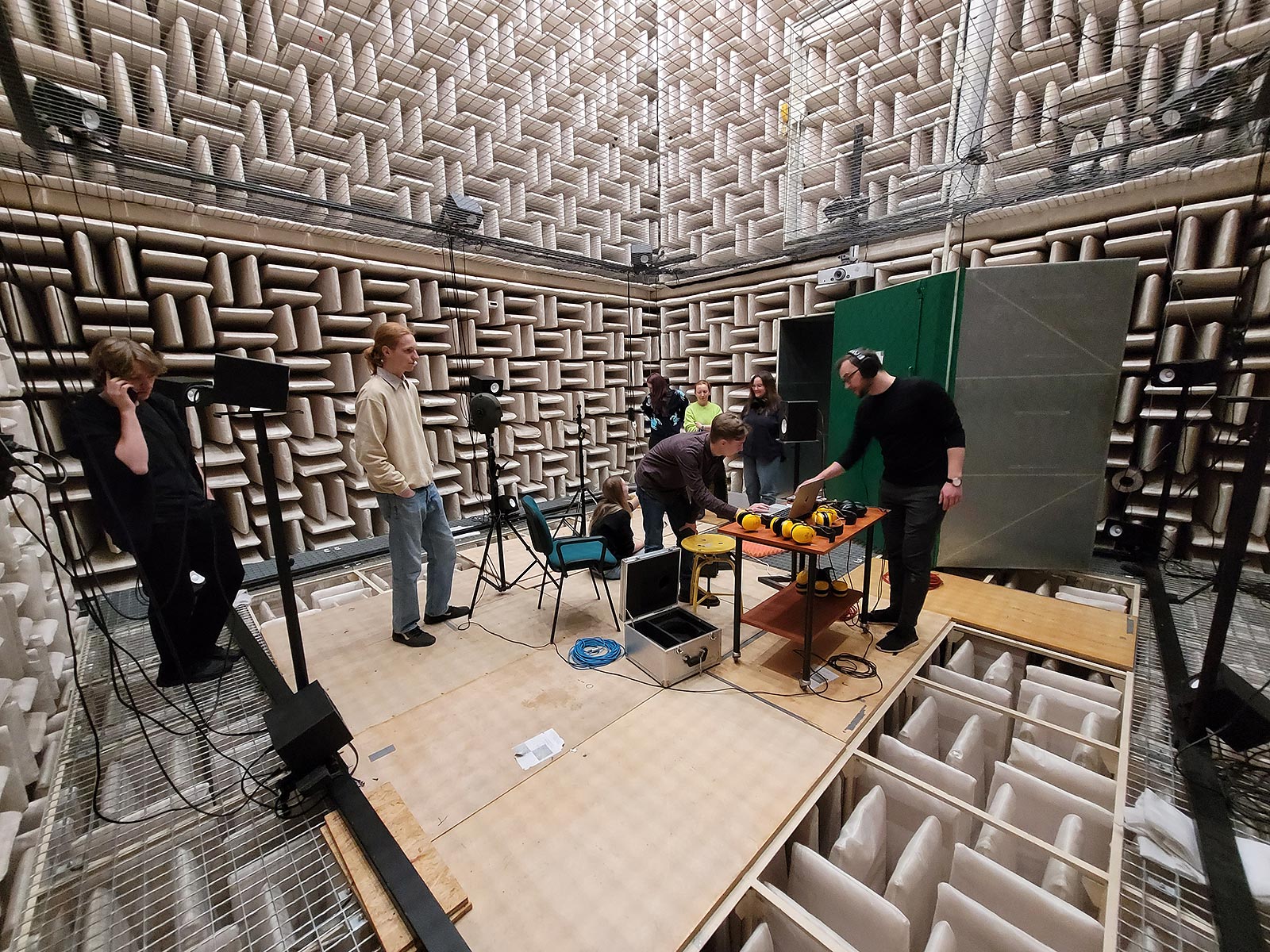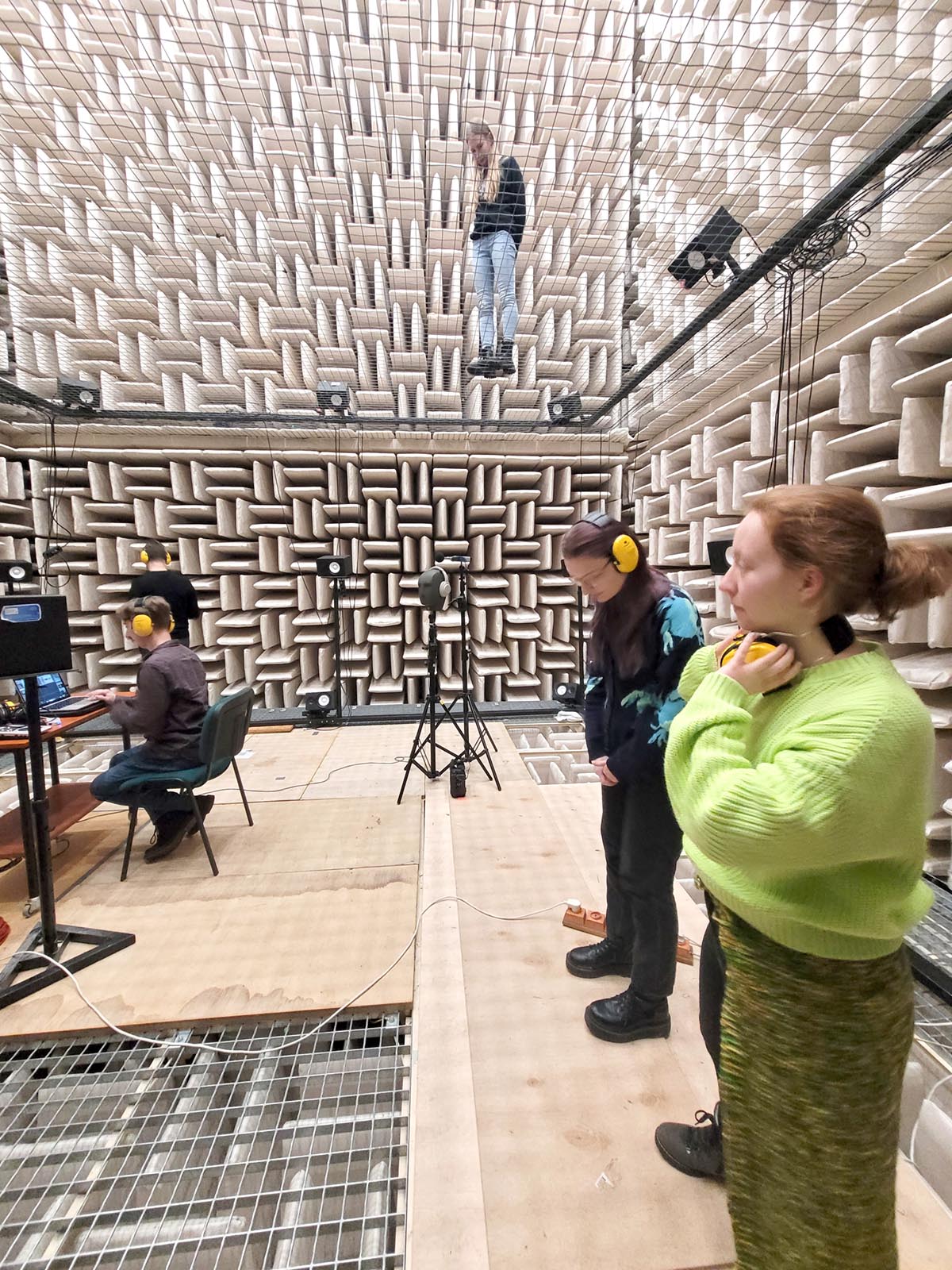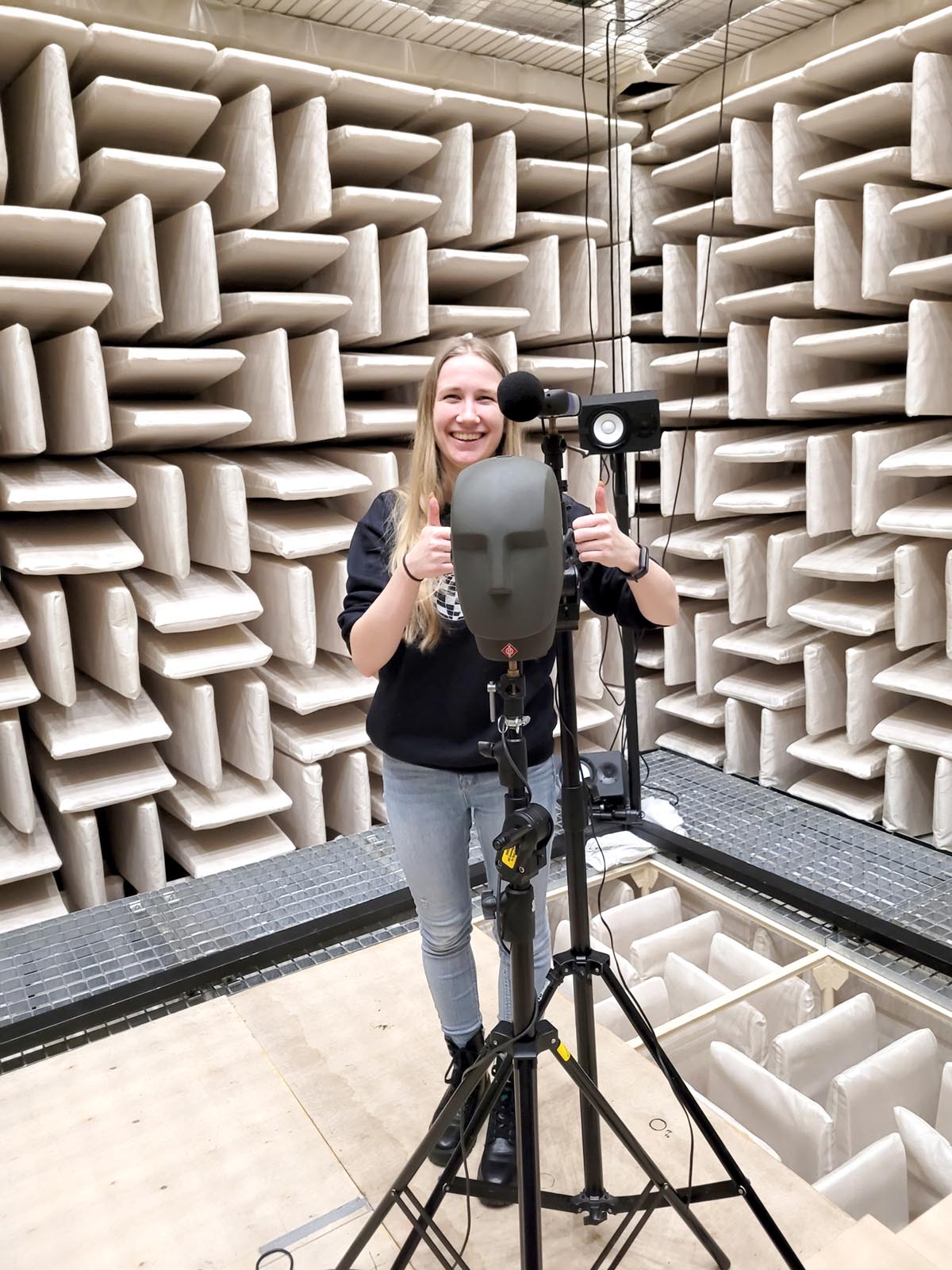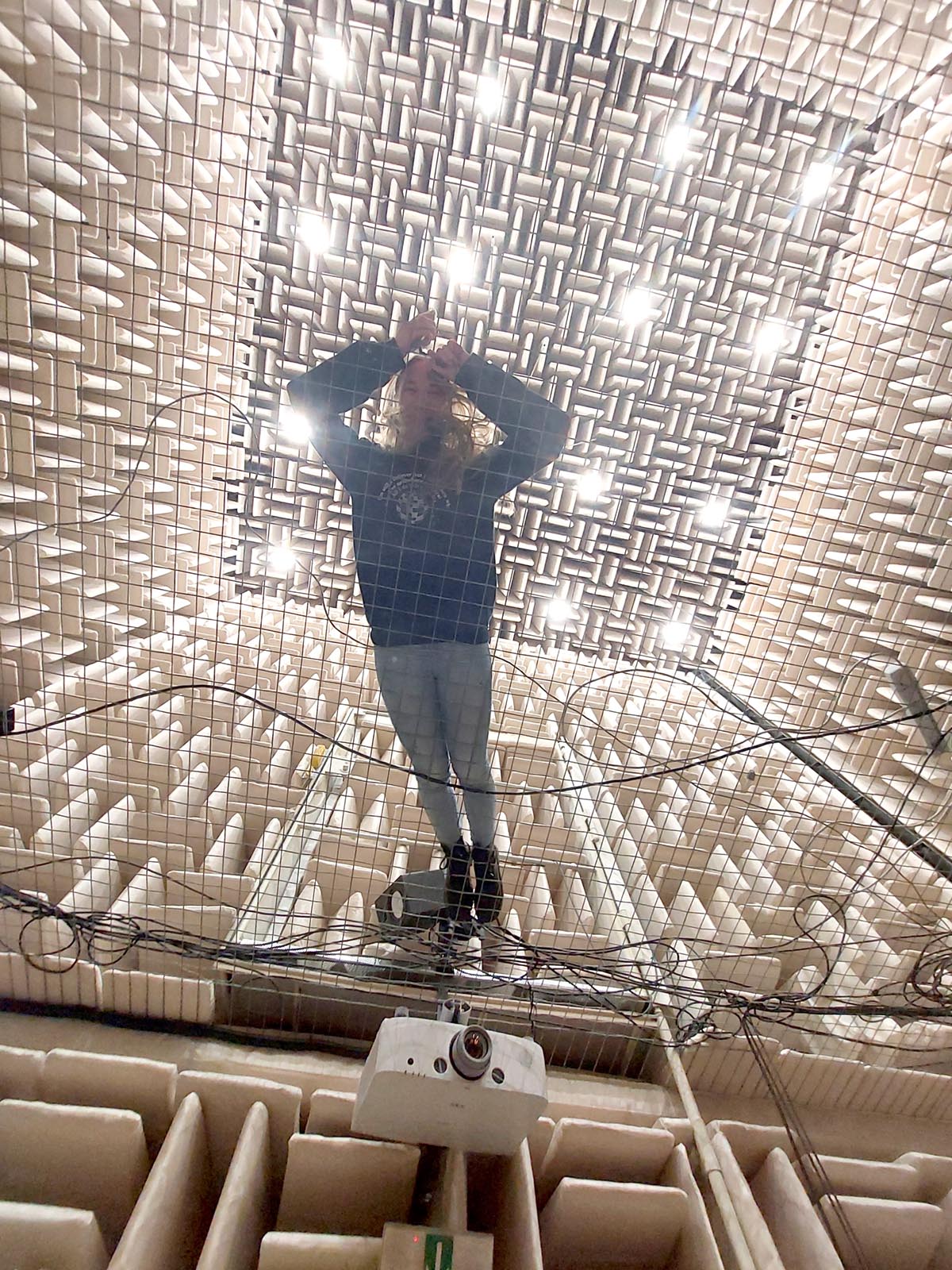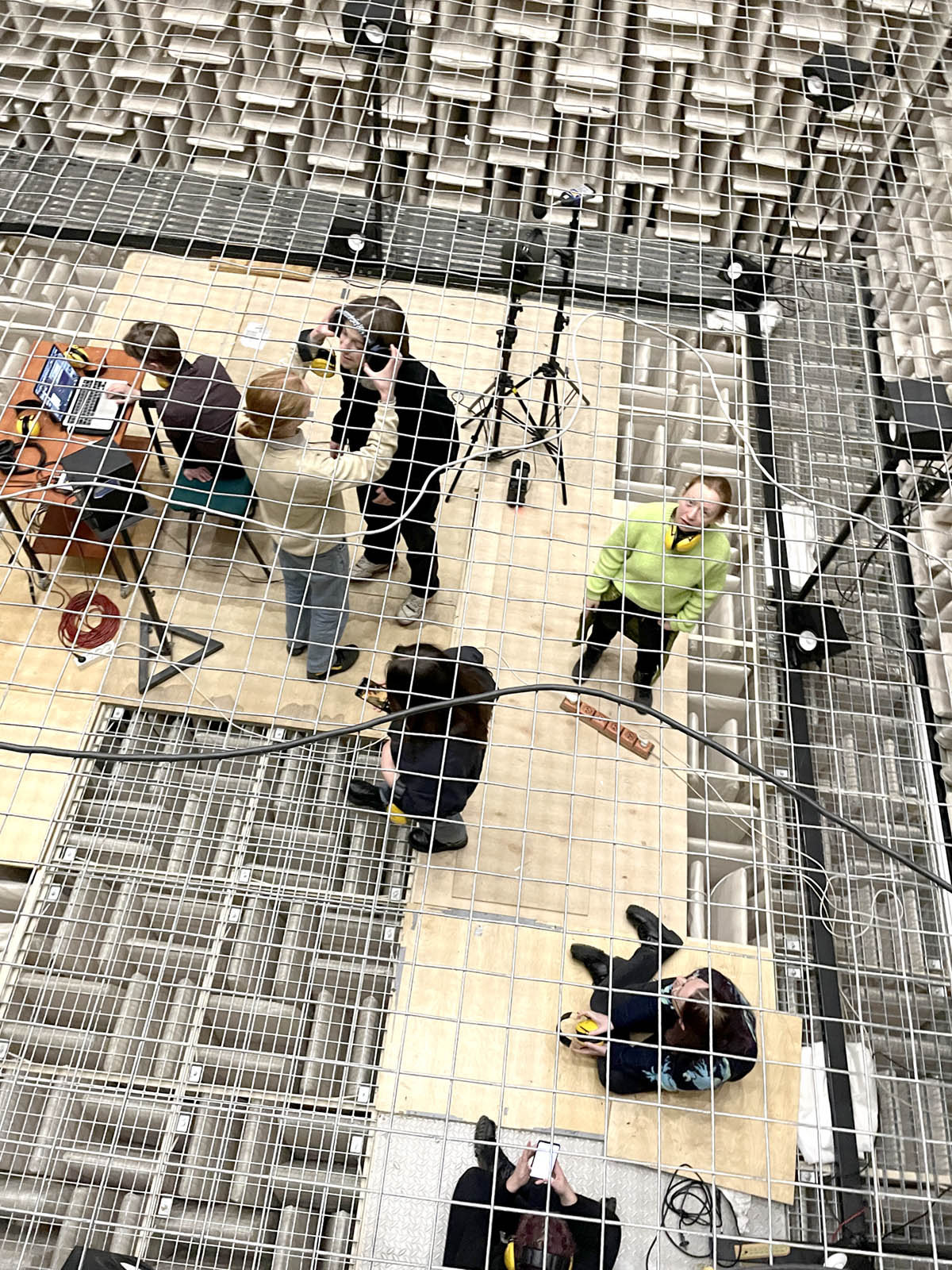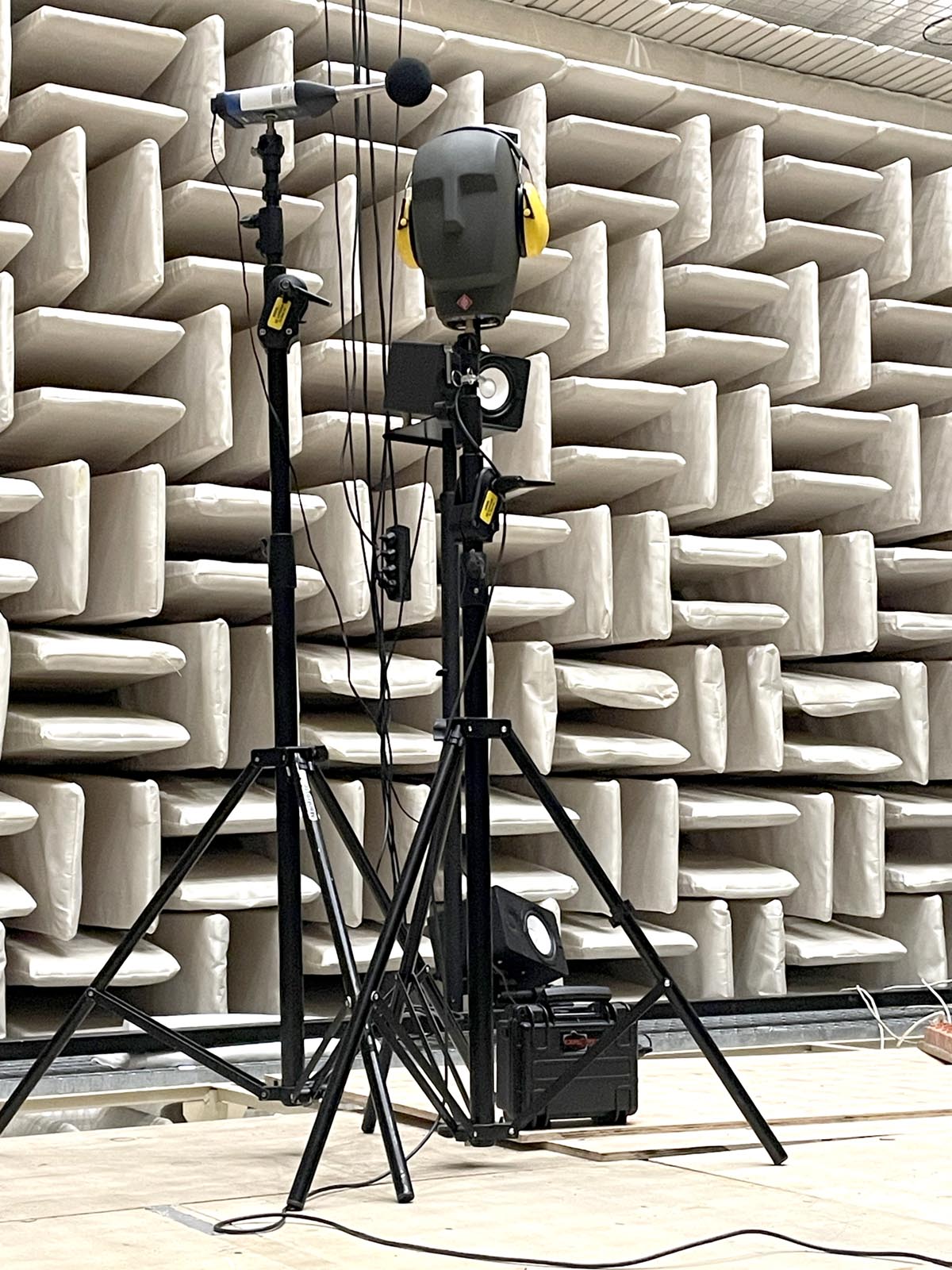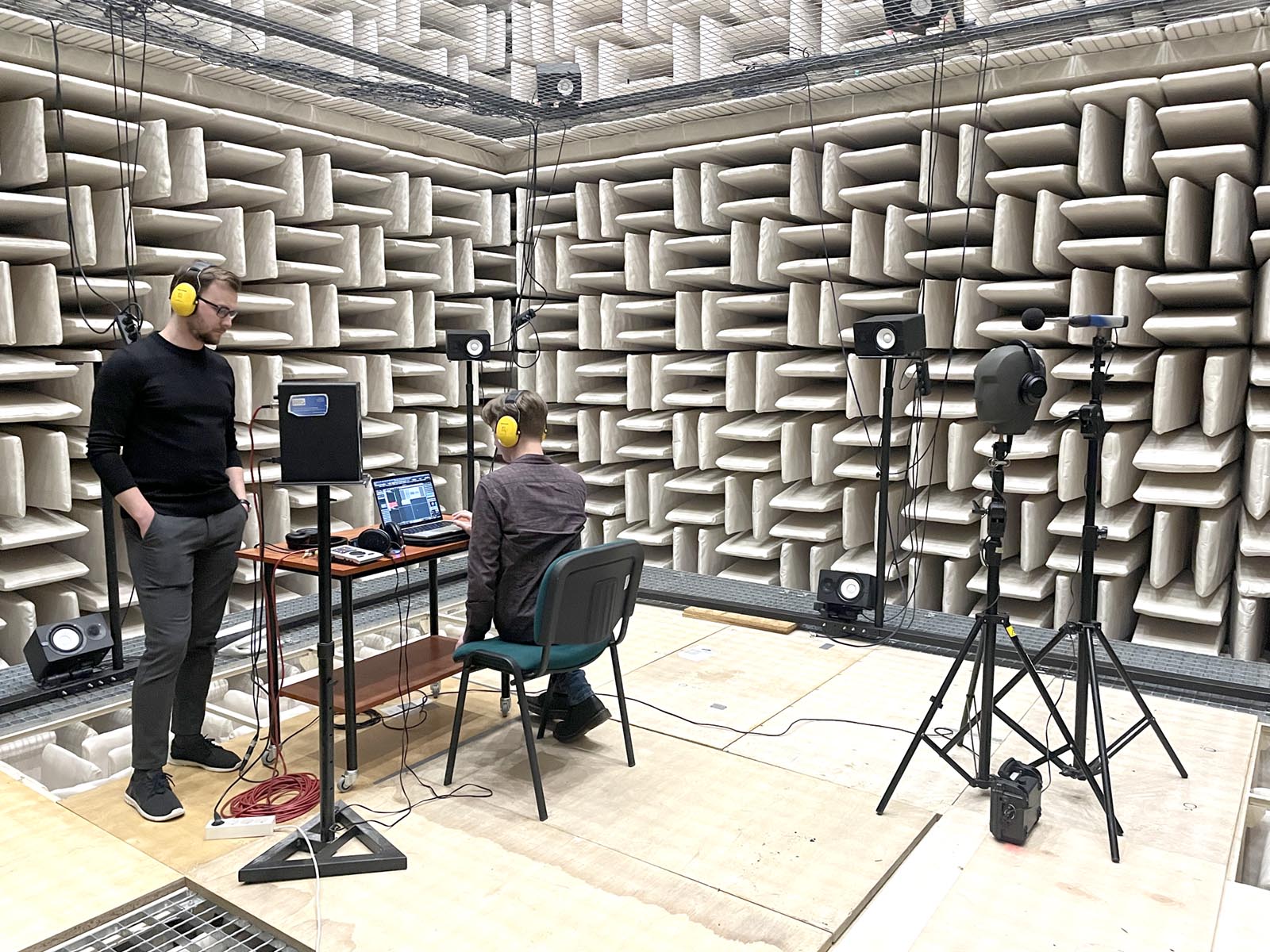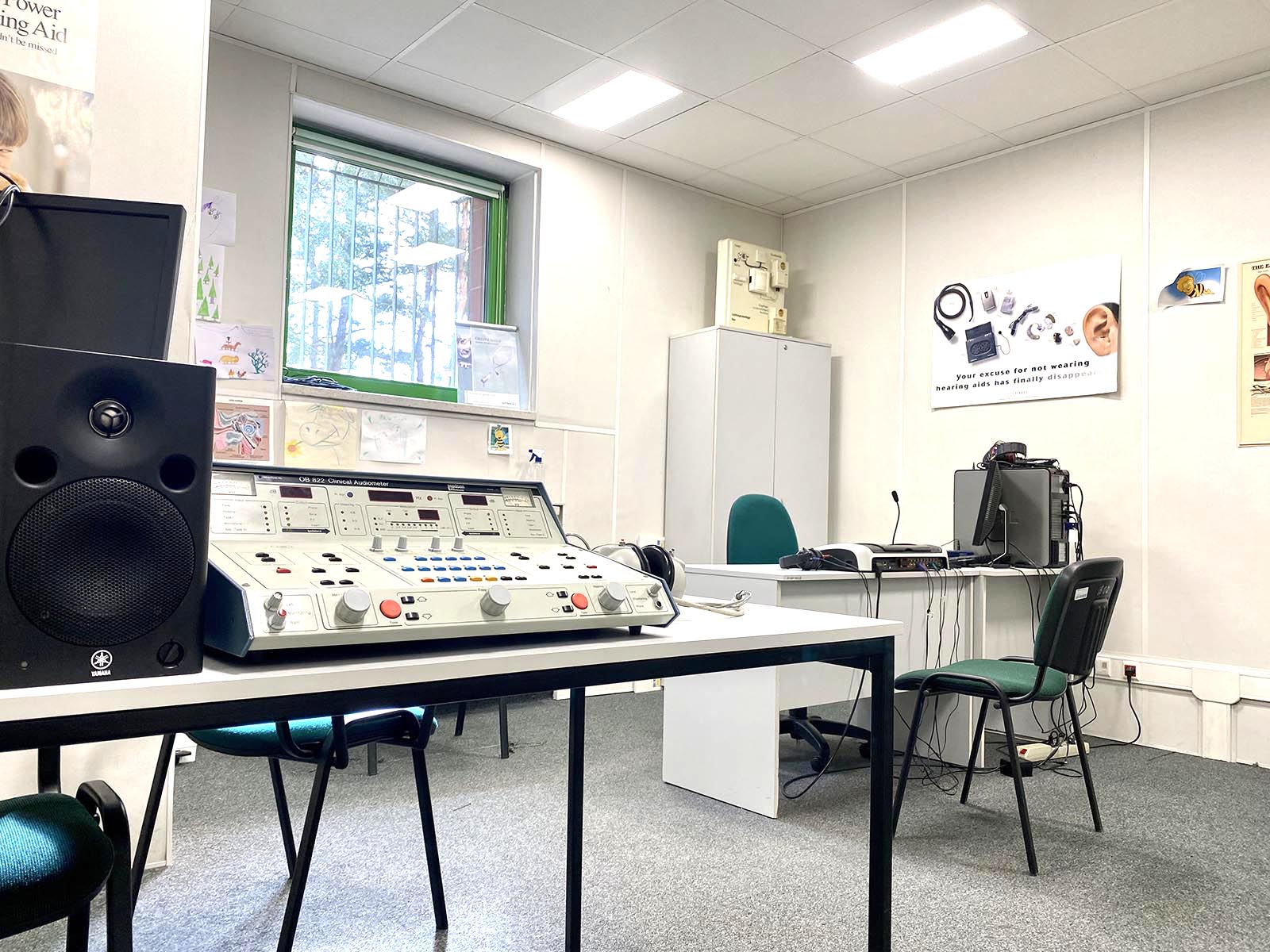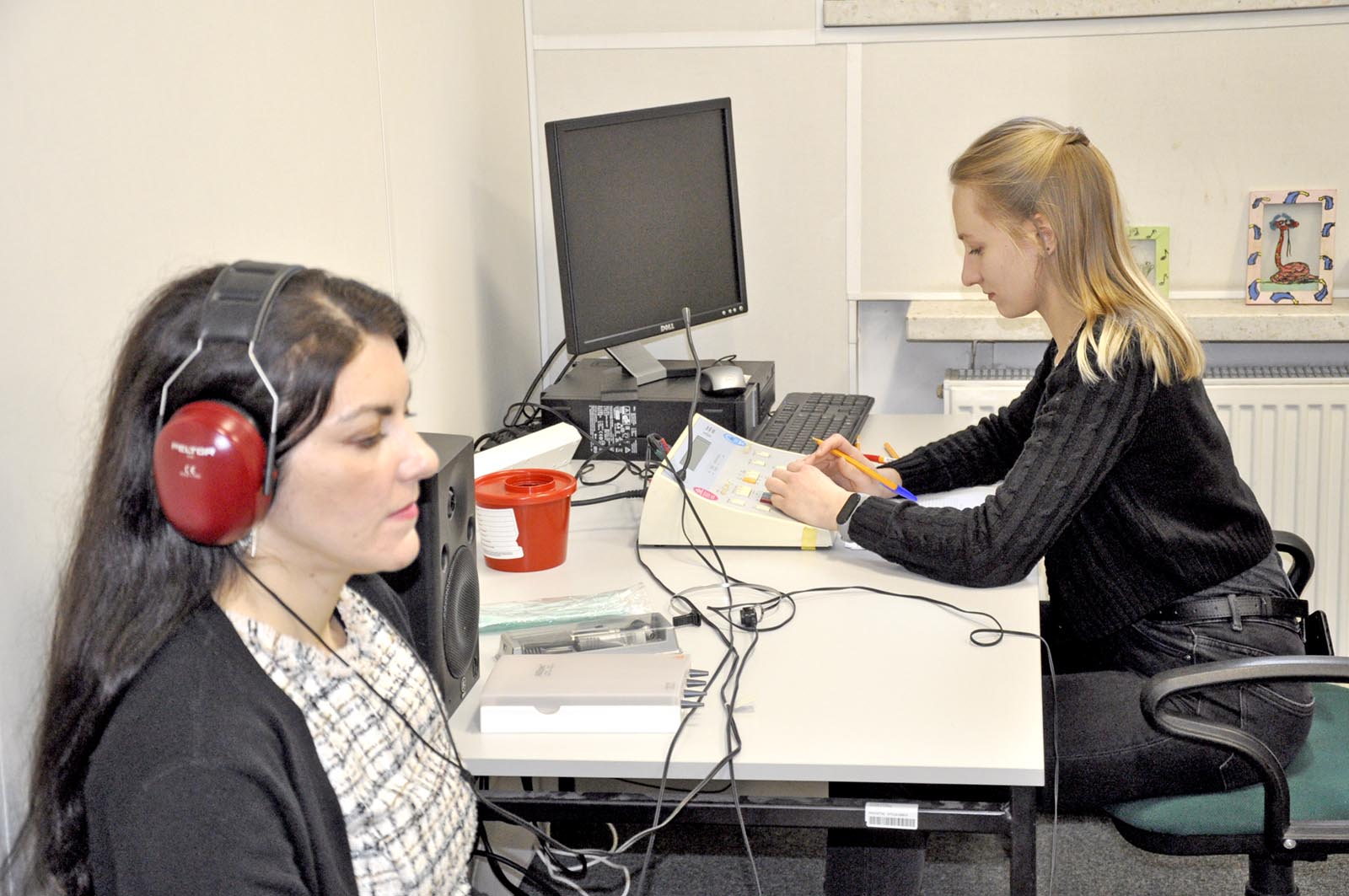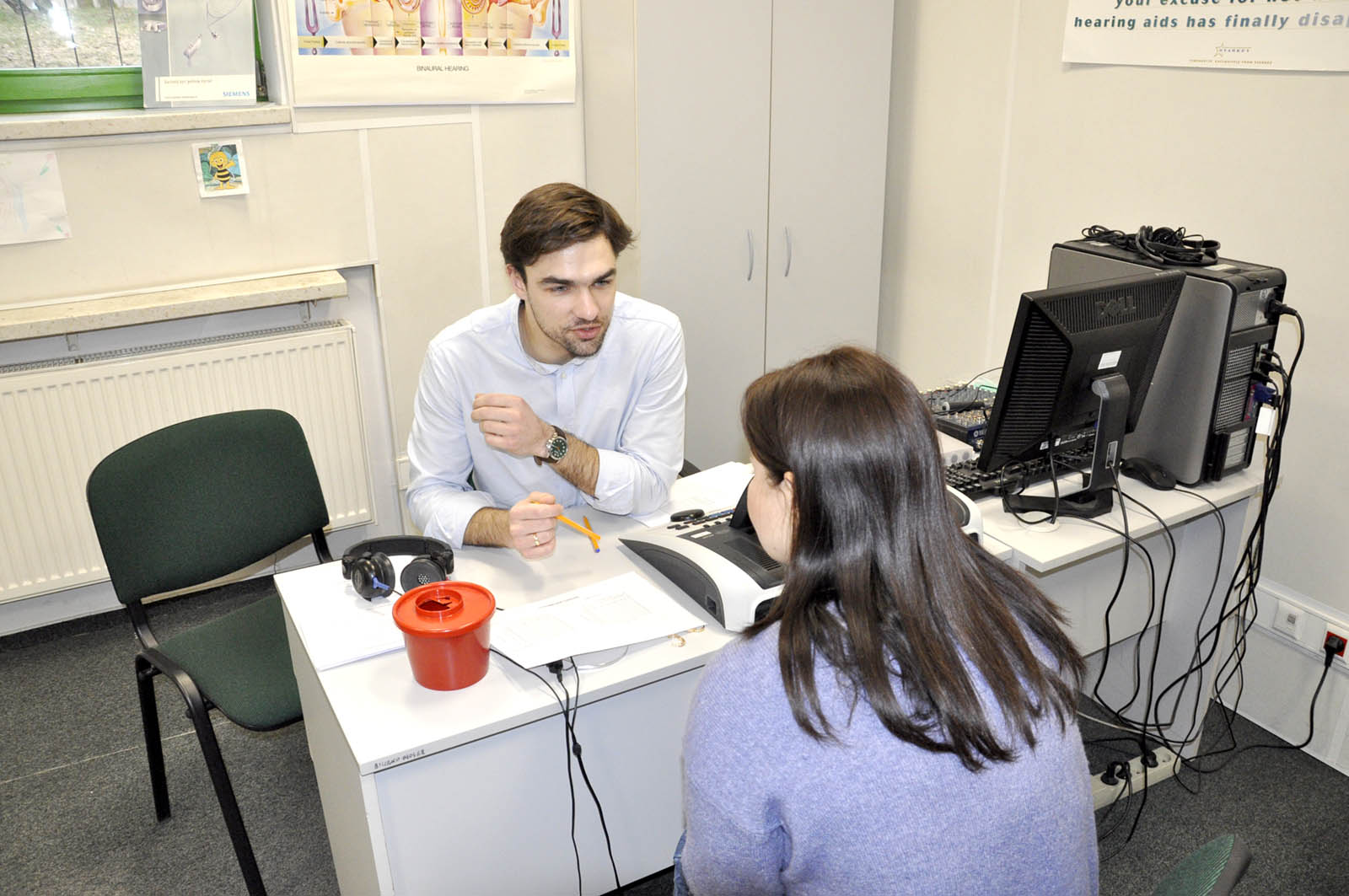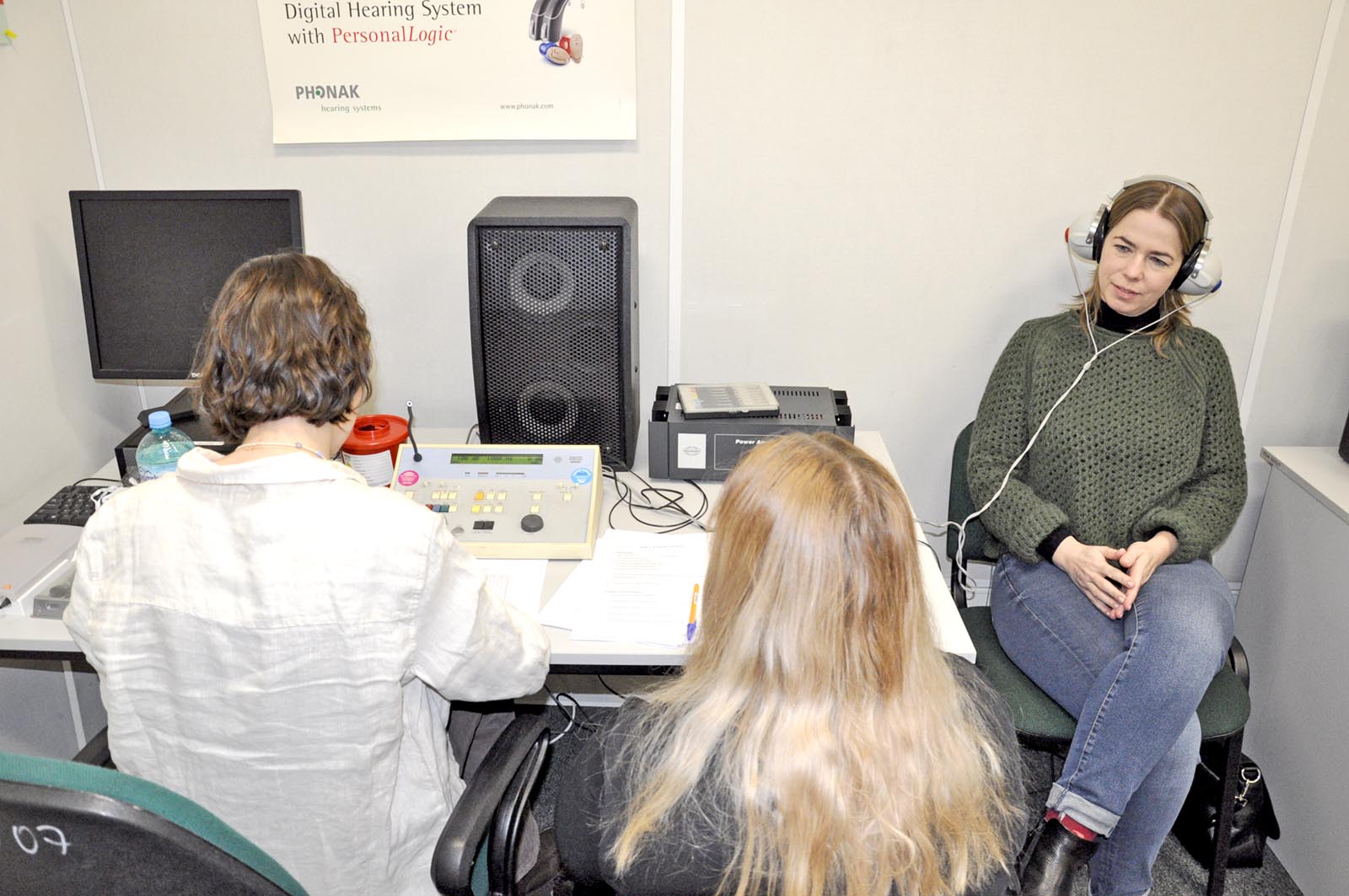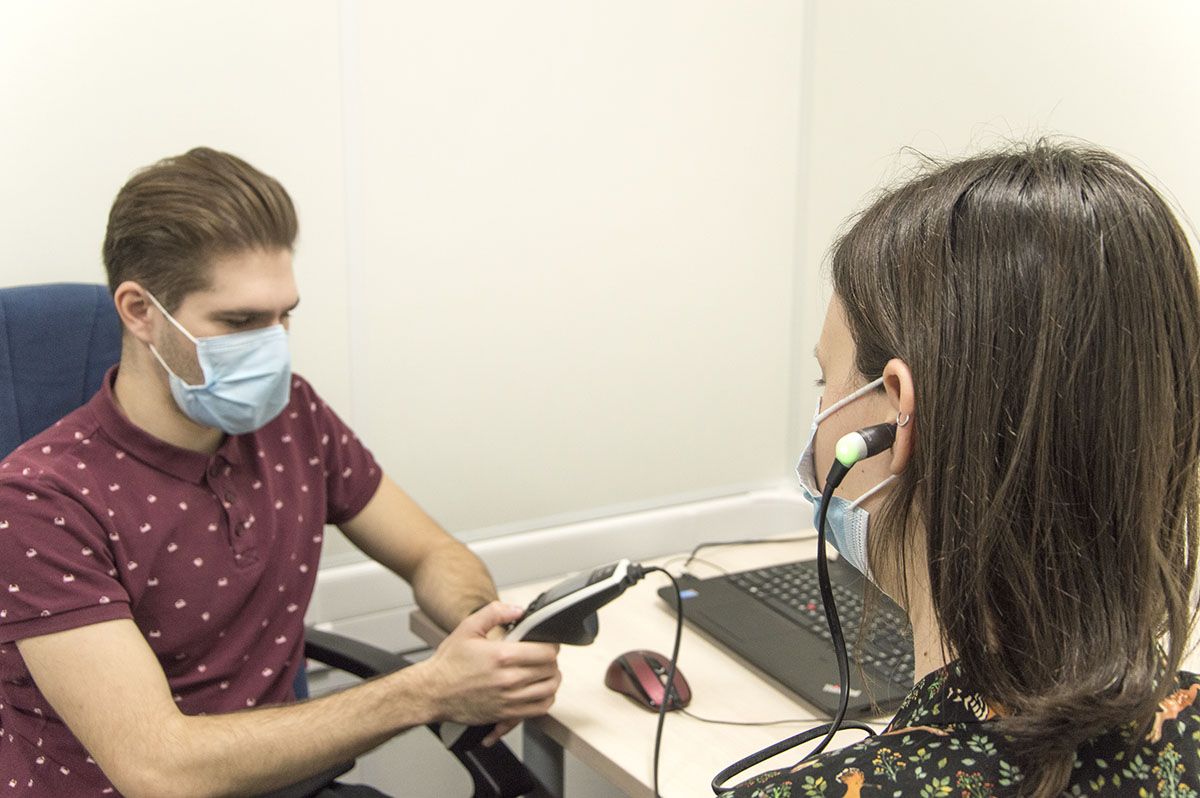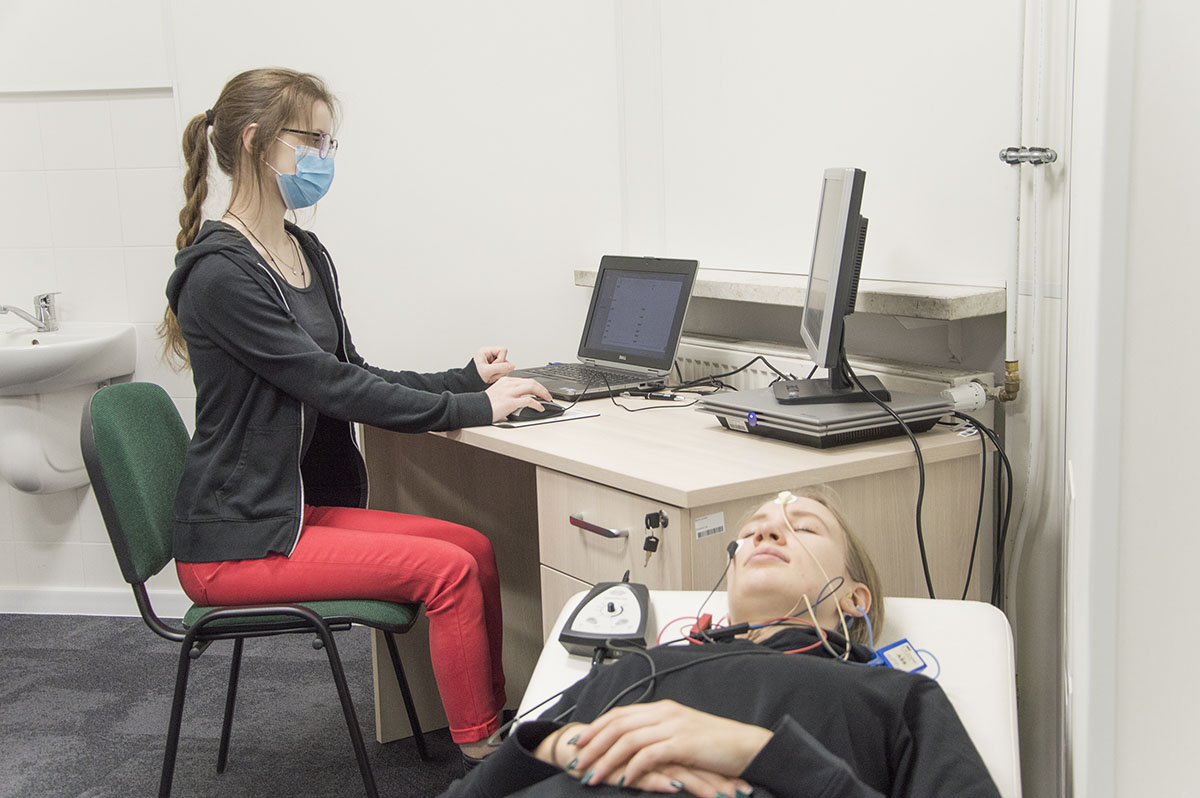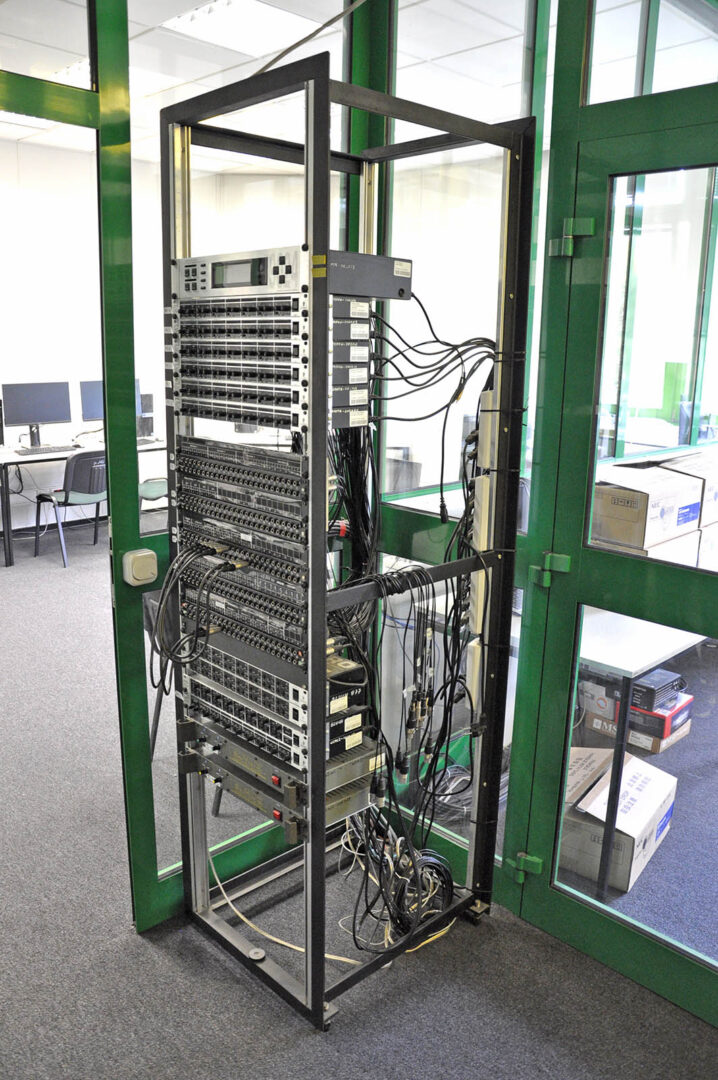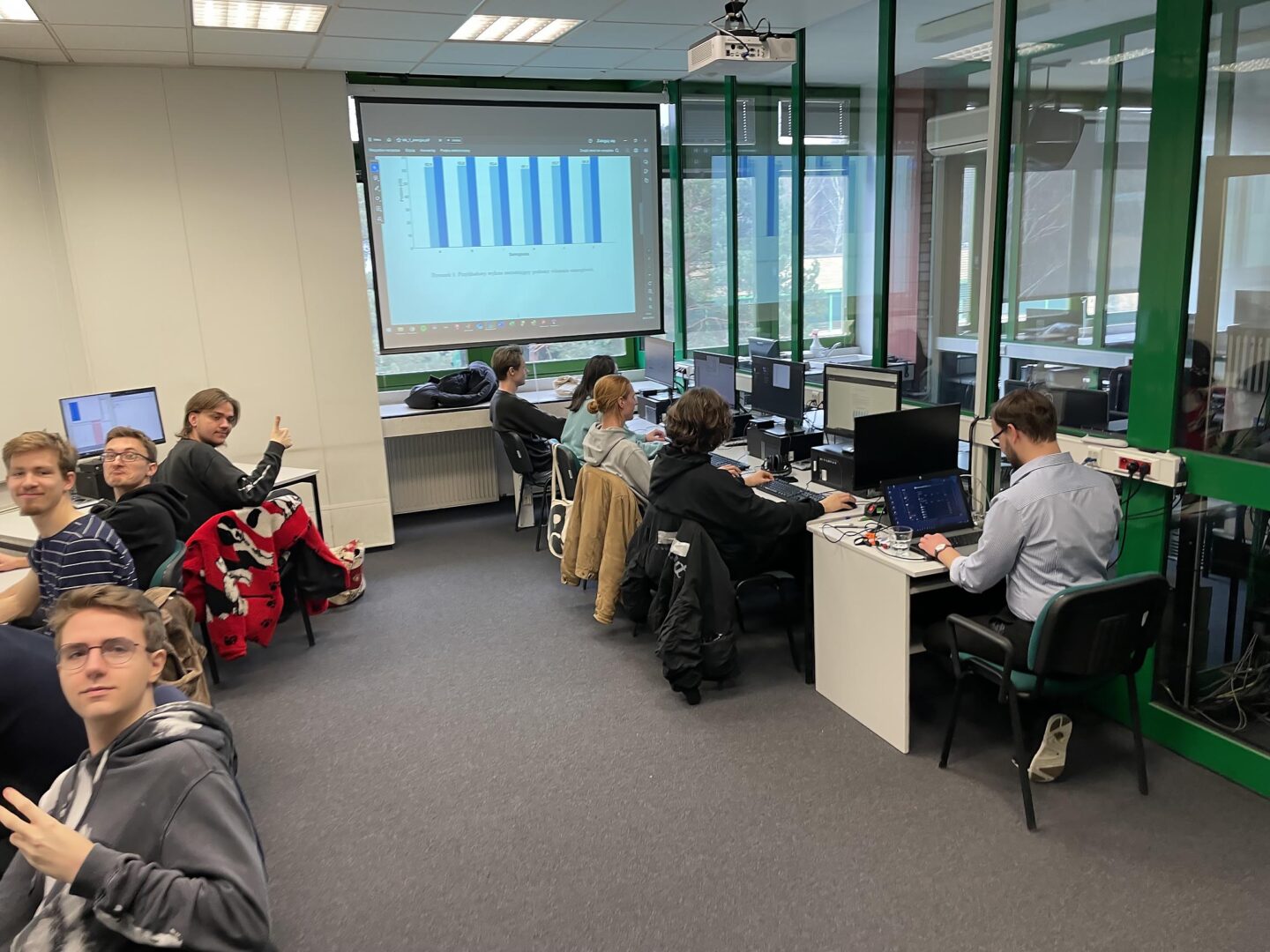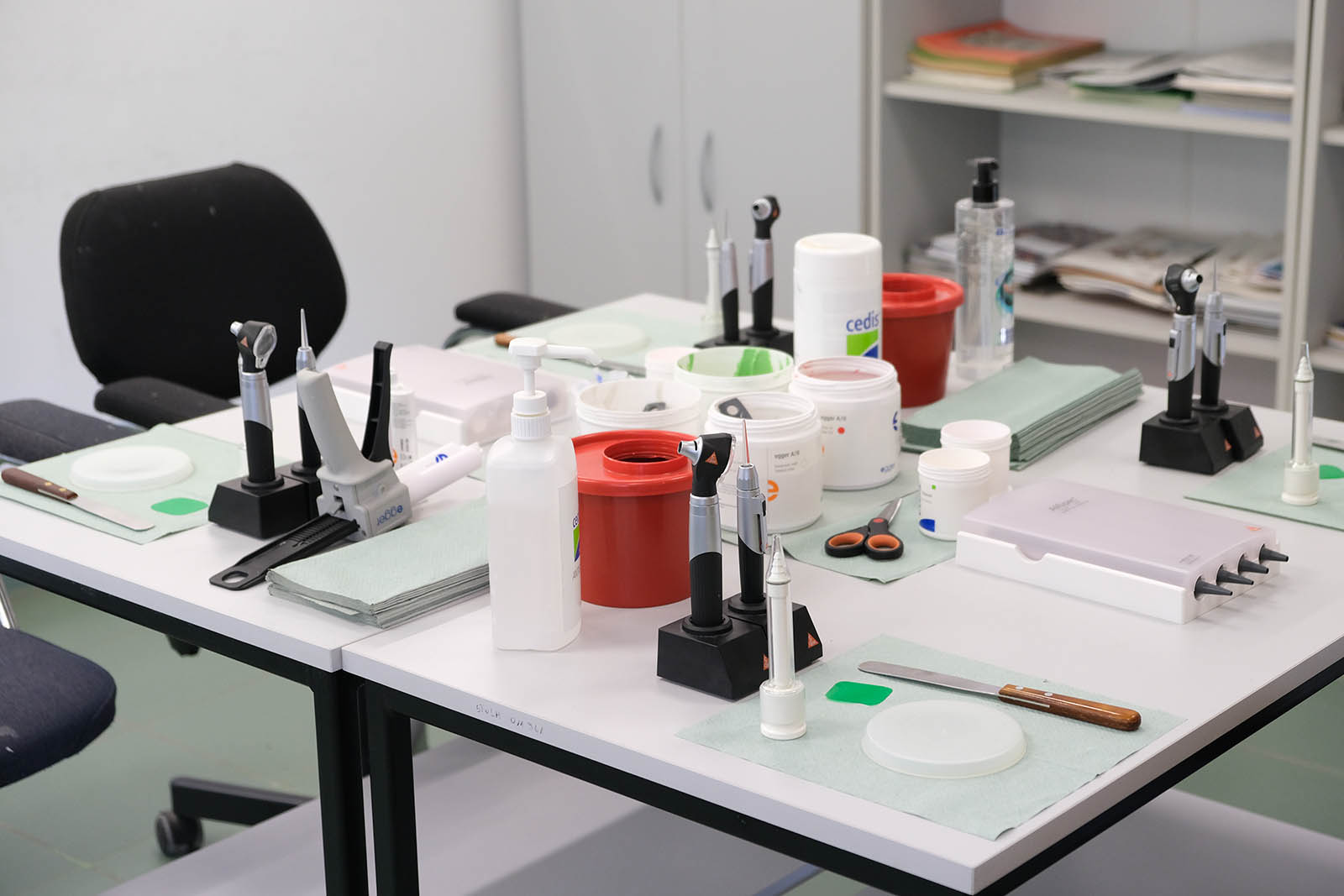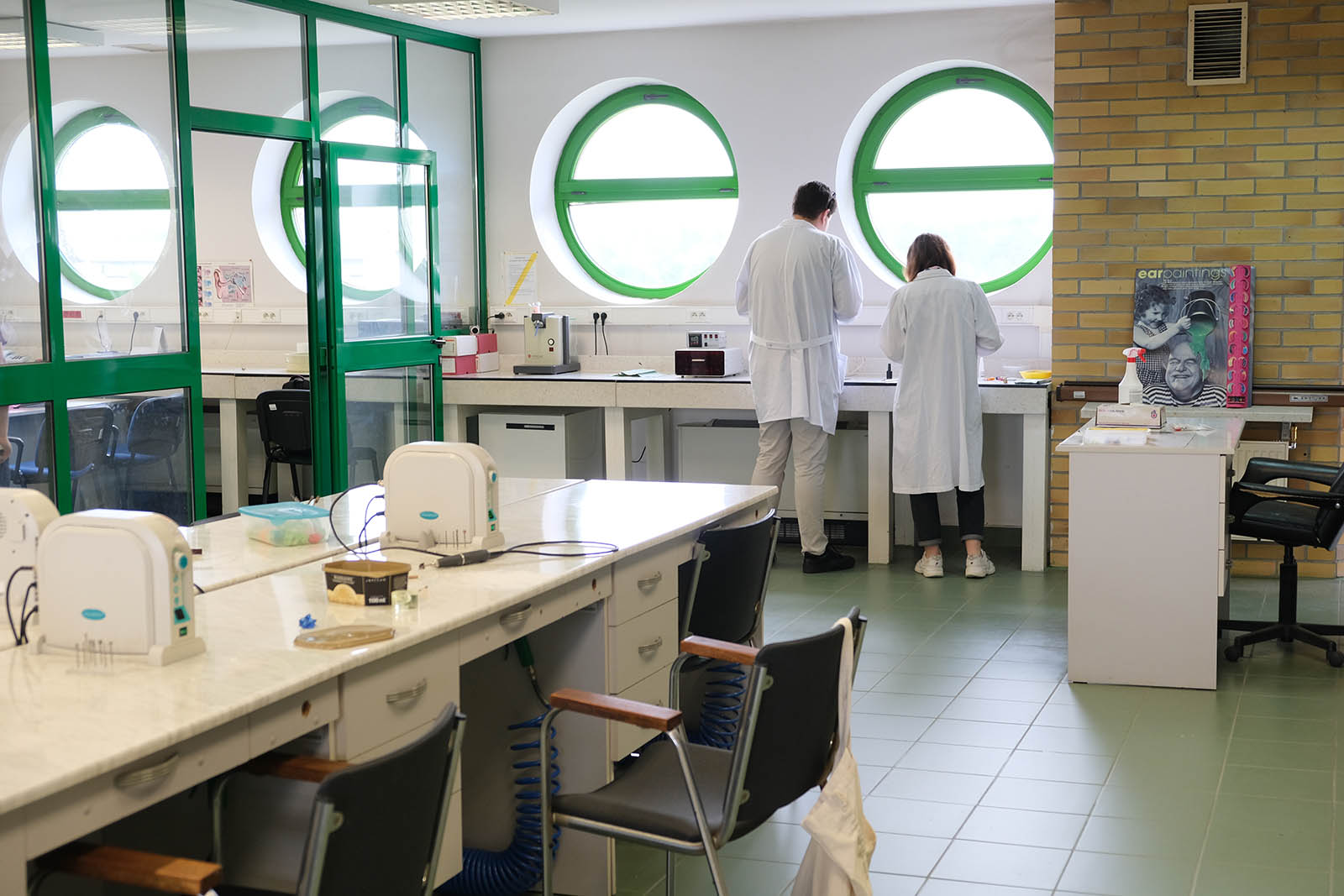research and measurement instruments, laboratories
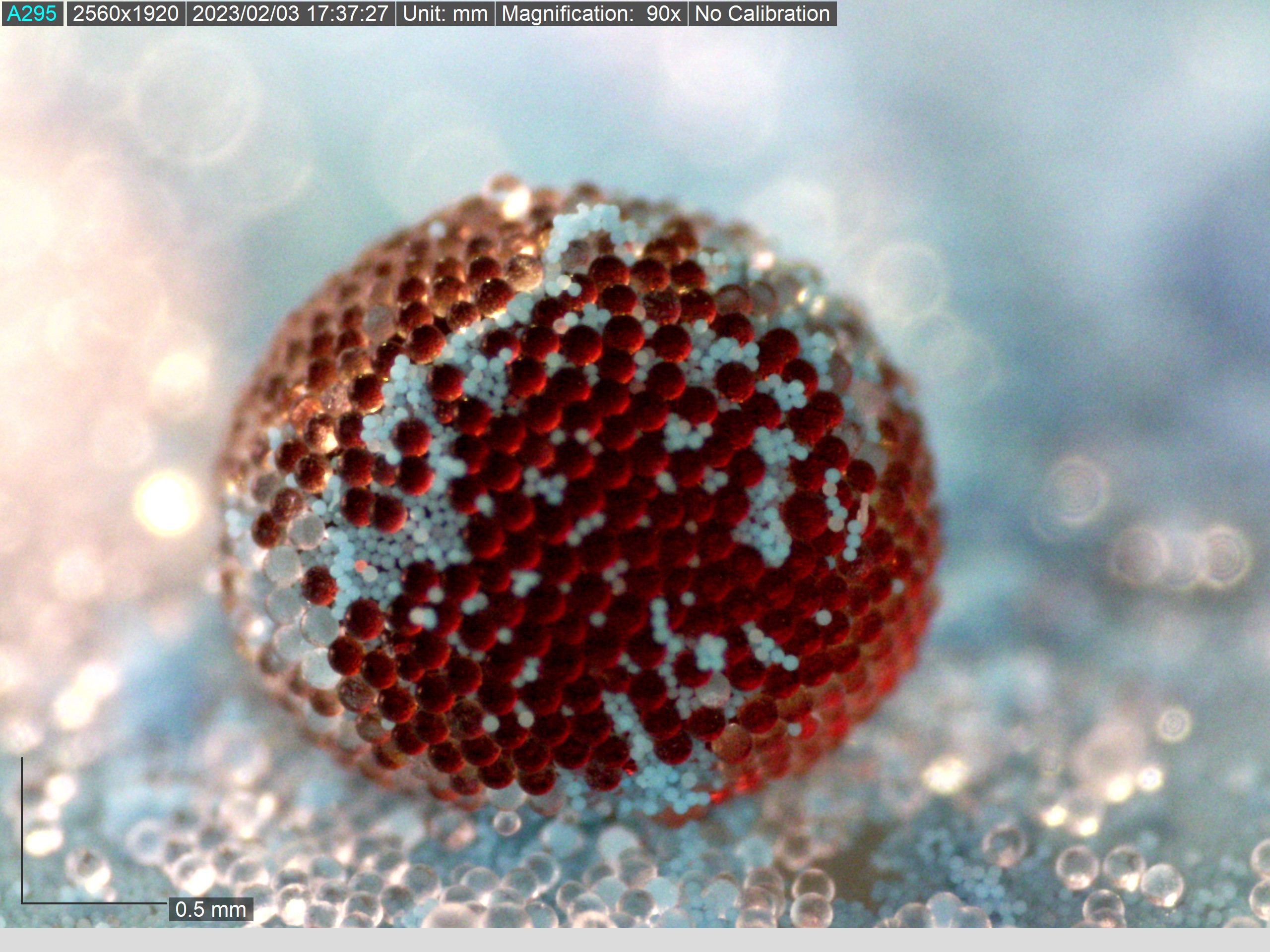
Molecular Acoustics
The ultrasonic research group is engaged in the study of matter by means of waves at ultrasonic frequencies. In particular, it studies colloidal systems such as magnetic liquids and Pickering emulsions.
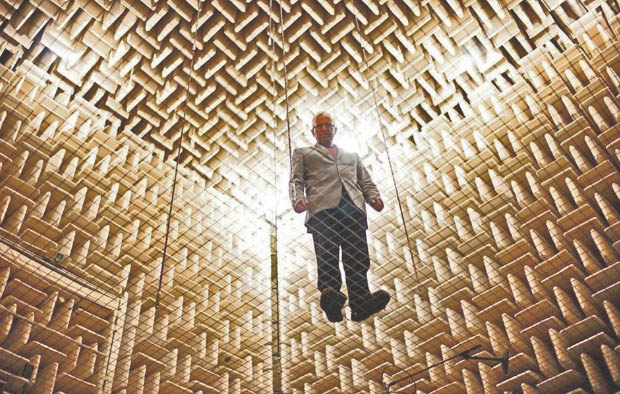
Echoless chamber
An anechoic cabin is a place where, as the name suggests, there is no echo. This means that any sound that reverberates in such a cabin does not bounce off any surface. As a result, we are dealing only with the so-called direct wave.

Objective audiometry
Hearing tests based on methods of analyzing acoustic or electrophysiological signals based on modern digital signal processing algorithms are performed in the laboratory.
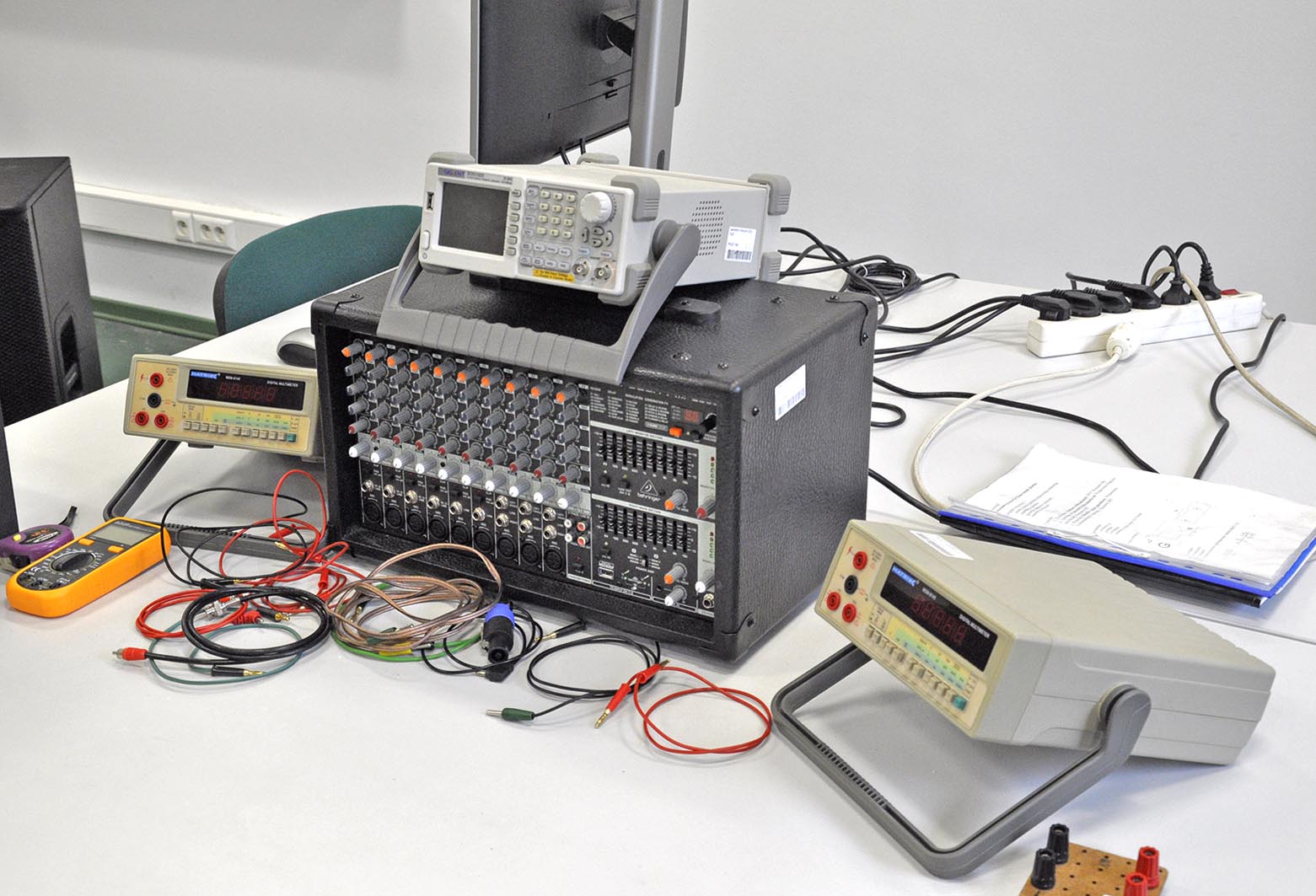
Electroacoustics laboratory
It’s a studio where you gain hands-on experience in electronics, focusing on sound-related equipment such as amplifiers, speakers, microphones and mixing consoles.
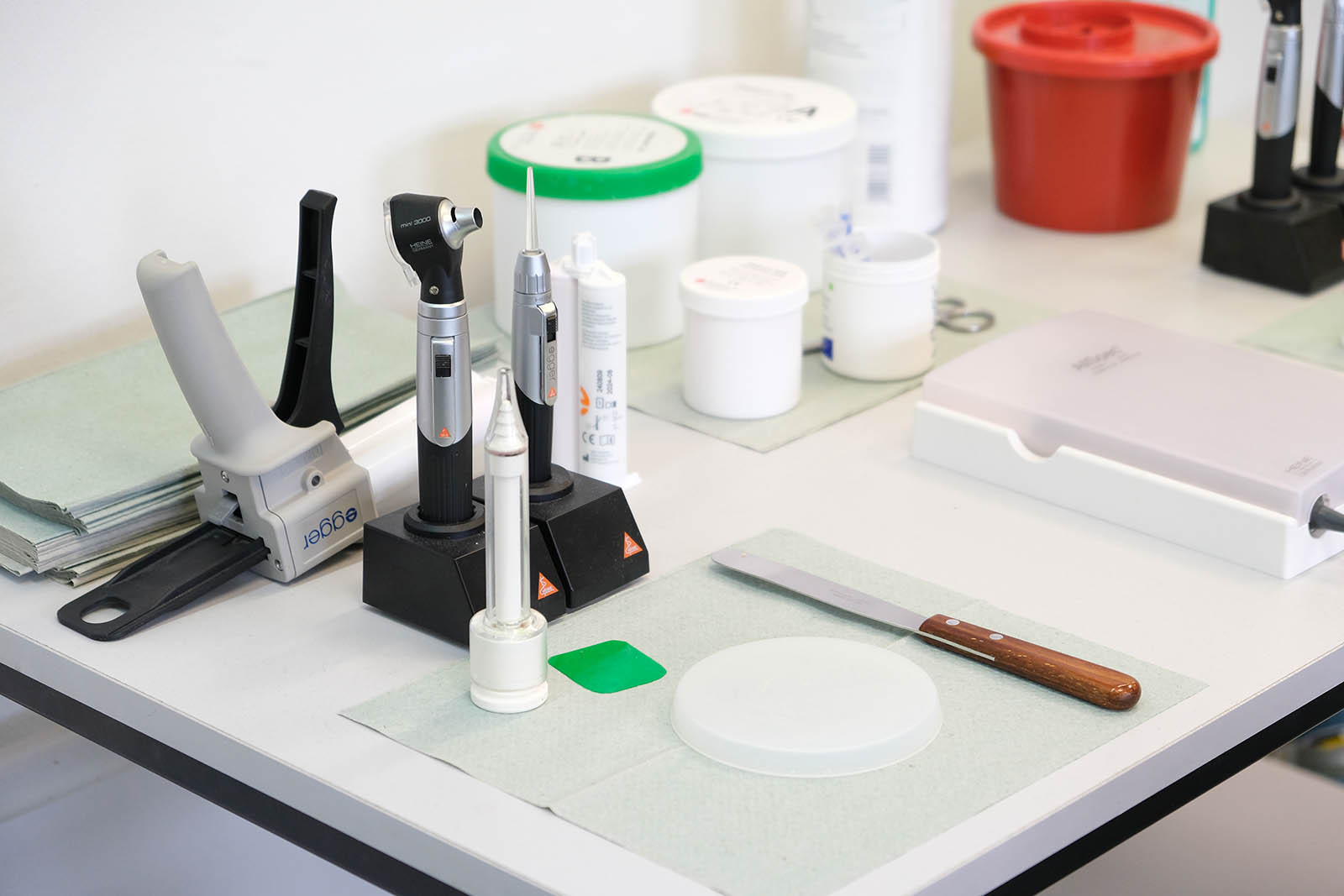
Otoplasty workshop
The purpose of the class is to familiarize students with the methods of manufacturing a customized earmold. Classes in otoplasty include: otoscopy and videotoscopy, taking an impression of the ear, making an earmold using the PNP method (positive-negative-positive), mechanical processing of the earmold, 3d scanning
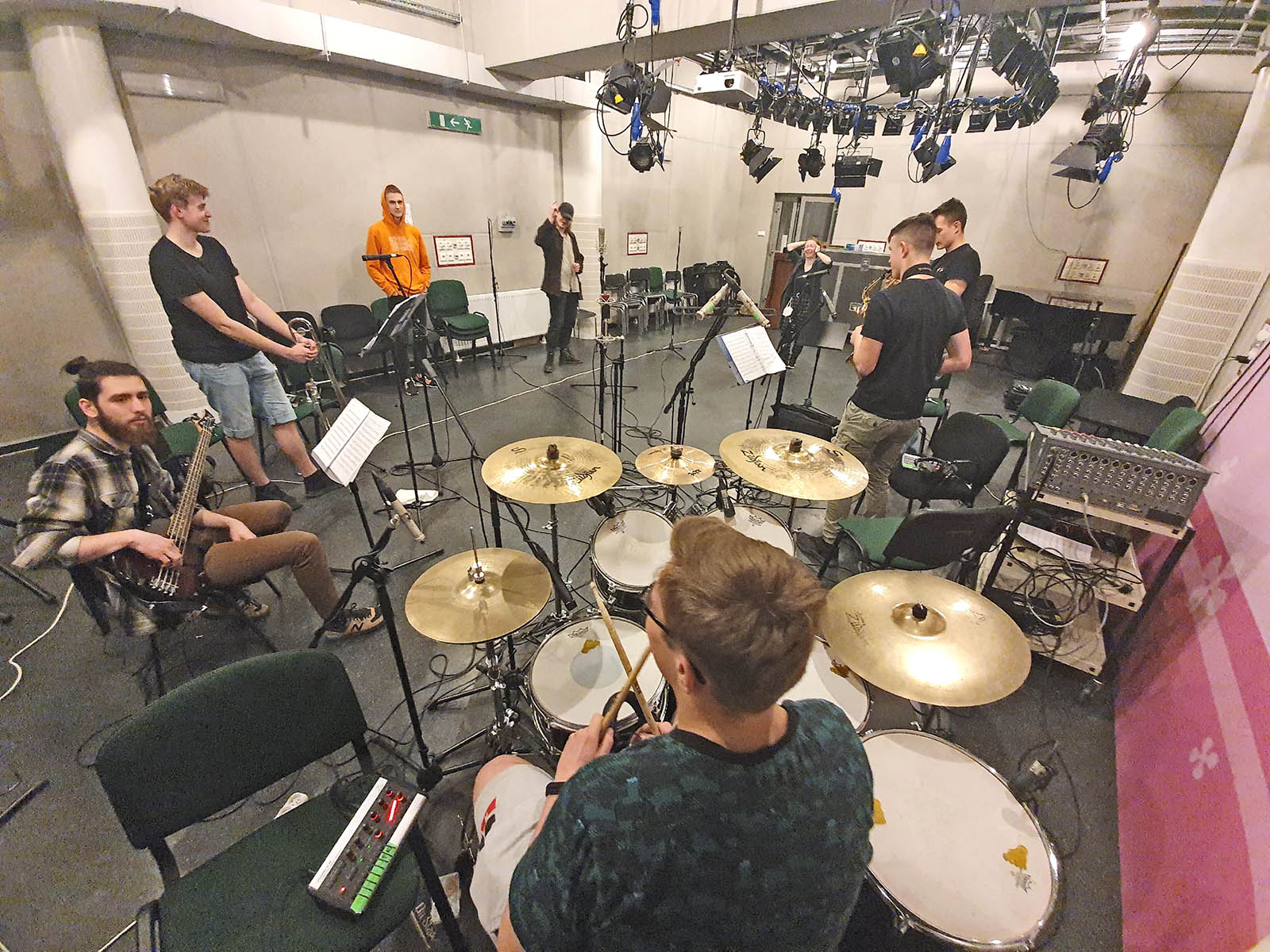
Two recording studios
The recording studio is an extremely important place for musicians, music producers and other professionals involved in sound production. The UAM Department of Acoustics has two fully equipped recording studios with hardware and software.
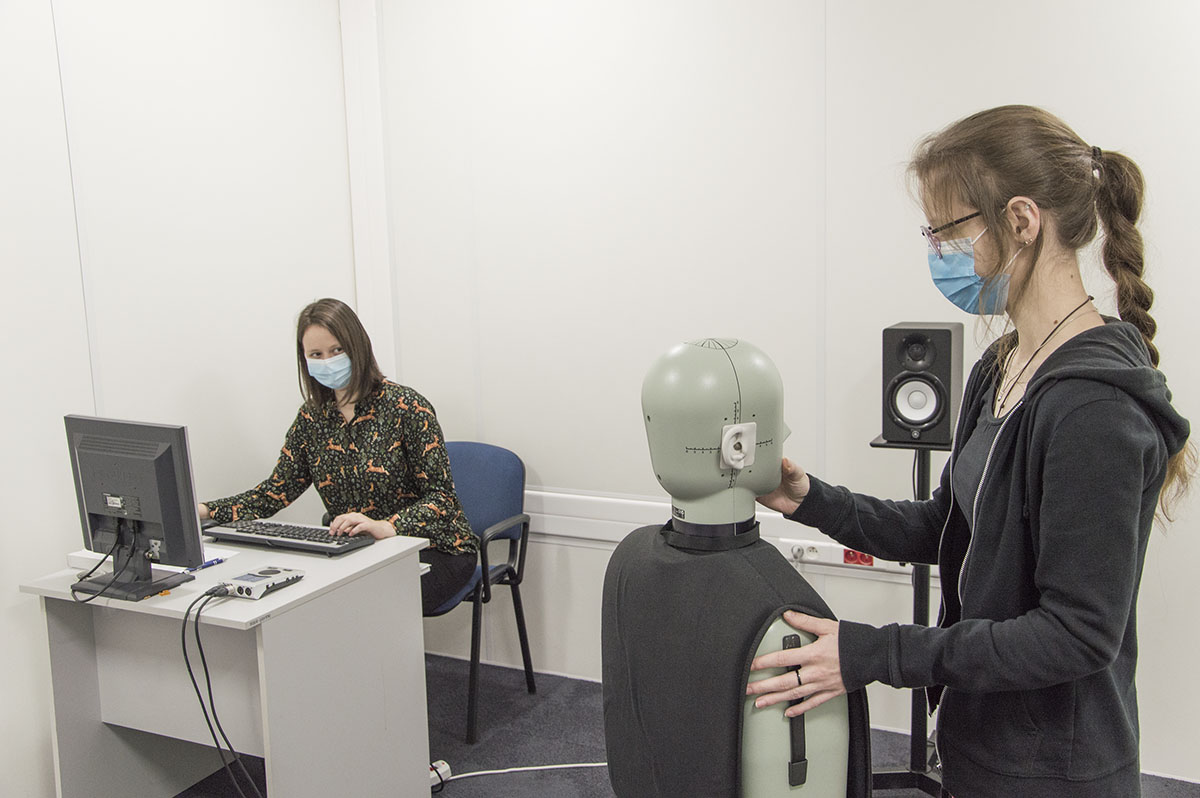
Free field hearing aid laboratory
This is a place where students can test, adjust and diagnose hearing aids.

Tonal audiometry
The Department of Acoustics has four rooms for audiometric testing. Each of the rooms has been acoustically adapted to achieve appropriate acoustic conditions.

Ear Training, Matlab
In the ear training studio of sound directors, students hone their ability to recognize differences in sound volume, recognize pitch, frequency bands, changes in timbre and level of sound material.
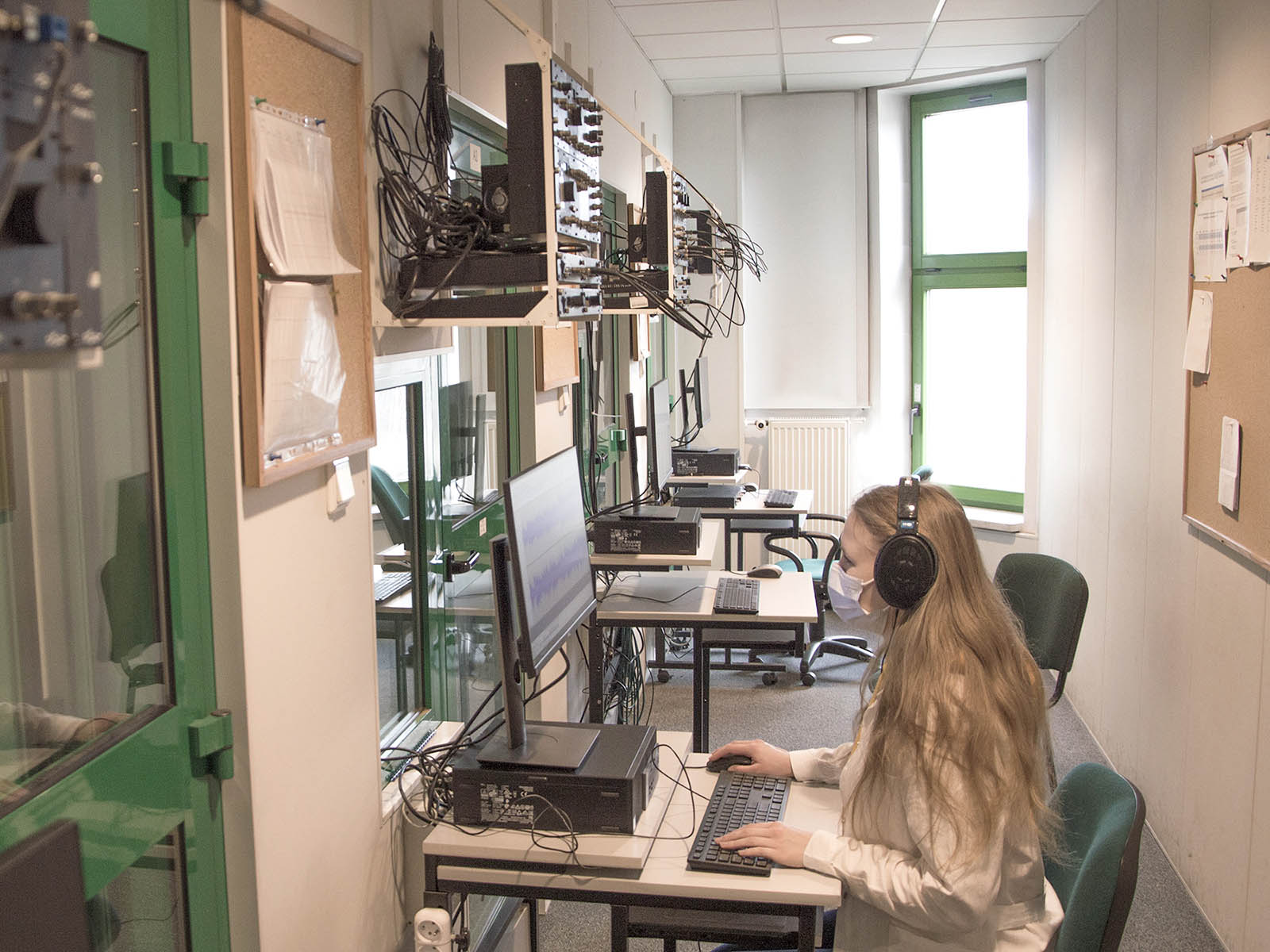
Laboratory of psychoacoustics and psychophysics of hearing
The studio’s rooms and the listening booths inside (8 units) were specially designed to achieve high acoustic isolation from sounds and vibrations that could interfere with experiments.
Psychoacoustics Laboratory
Laboratory of psychoacoustics and psychophysics of hearing. The rooms of the laboratory and the listening booths in it (8 pieces) were specially designed to achieve high acoustic isolation from sounds and vibrations that could interfere with the course of experiments. All measurement stations are equipped with high-end apparatus for the generation and recording of sound signals and specialized software, allowing the preparation of any type of psychoacoustic experiment. In the laboratory, advanced subjective hearing tests are carried out, involving the evaluation of sounds in terms of pitch, timbre loudness and other features of sound impression. The results of these tests are used to gain a deeper understanding of the mechanisms of hearing and to create models of hearing.
Laboratory of Molecular Acoustics
The ultrasonic research group is engaged in the study of matter by means of waves at ultrasonic frequencies. In particular, it studies colloidal systems such as magnetic liquids and Pickering emulsions.
large and small recording studio
The recording studio is an extremely important place for musicians, music producers and other sound production professionals. It is a space that allows creators to create, record and process sounds with freedom and precision. The UAM Department of Acoustics has two recording studios. Both are equipped with audio processing software such as Reaper, Sound Forge, Cubase, Adobe Audition and others, which allow editing, mixing and mastering of recordings.
Free field hearing aid lab
The free-field hearing aid lab is a place where students can test, adjust and diagnose hearing aids. They work with an instructor who provides guidance and consultation. The lab provides a realistic environment for testing hearing aids in everyday situations, which helps students better understand and evaluate sound quality and adjust hearing aids for patients. This is crucial for learning and developing skills in audiology.
Anechoic chamber
An anechoic cabin is a place where, as the name suggests, there is no echo. This means that any sound that reverberates in such a cabin does not bounce off any surface. As a result, we only have to deal with the so-called direct wave. This is crucial if you want to measure the intrinsic noise of a given device or, for example, the directional or frequency characteristics of a given device. The anechoic booth is therefore used to measure loudspeakers and other pro-audio devices, as well as to study the noise level generated by household appliances, such as a vacuum cleaner.
Tonal audiometry laboratory
Laboratory of tonal audiometry. The Department of Acoustics has four rooms for audiometric testing. Each of the rooms has been acoustically adapted in order to obtain both appropriate acoustic conditions in the rooms and also to meet the requirements of sufficiently high acoustic insulation, limiting the possibility of acoustic interference penetrating into the rooms. In the laboratory, tests are performed in the field of hearing diagnostics, both basic and advanced. Performing a set of tests in the laboratory allows for a complete hearing diagnosis, using subjective testing methods. The laboratory has state-of-the-art audiometers that guarantee world-class testing.
Objective audiometry laboratory
Laboratory of objective audiometry. The laboratory performs hearing tests based on methods of analysis of acoustic or electrophysiological signals on the basis of modern algorithms of digital signal processing. The purpose of these tests is to diagnose the human auditory system without the need for active participation of the test person during the measurements. The use of objective methods of hearing testing is particularly important in the case of uncooperative people, such as newborns, people with various degrees of intellectual impairment. The laboratory is equipped with state-of-the-art apparatus, enabling world-class testing.
Electroacoustics laboratory
Electro-acoustics studio, This is a studio where you gain practical experience in electronics, focusing on sound-related devices such as amplifiers, speakers, microphones and mixing consoles.
Ear training lab, Matlab
In the ear training studio of sound directors, students hone their ability to recognize differences in sound volume, recognize pitch, frequency bands, changes in timbre and level of sound material.
Otoplasty lab
An individual ear mold is an integral part of a behind-the-ear hearing aid. The purpose of the earmold is to firmly fix the hearing aid on the ear of a hearing impaired person and to bring the acoustic signals amplified by the hearing aid directly to the external ear canal. Through the earmold, the frequency characteristics of the acoustic signals amplified by the hearing aid can be influenced, adjusting these characteristics to the needs of the hearing impaired person. The earmold also prevents acoustic feedback.The goal of the class is to familiarize students with the methods of manufacturing a customized earmold. Classes in otoplasty include: otoscopy and videotoscopy, taking an impression of the ear, making an earmold using the PNP method (positive-negative-positive), mechanical processing of the earmold, 3d scanning of the ear impression and modeling of the earmold.

